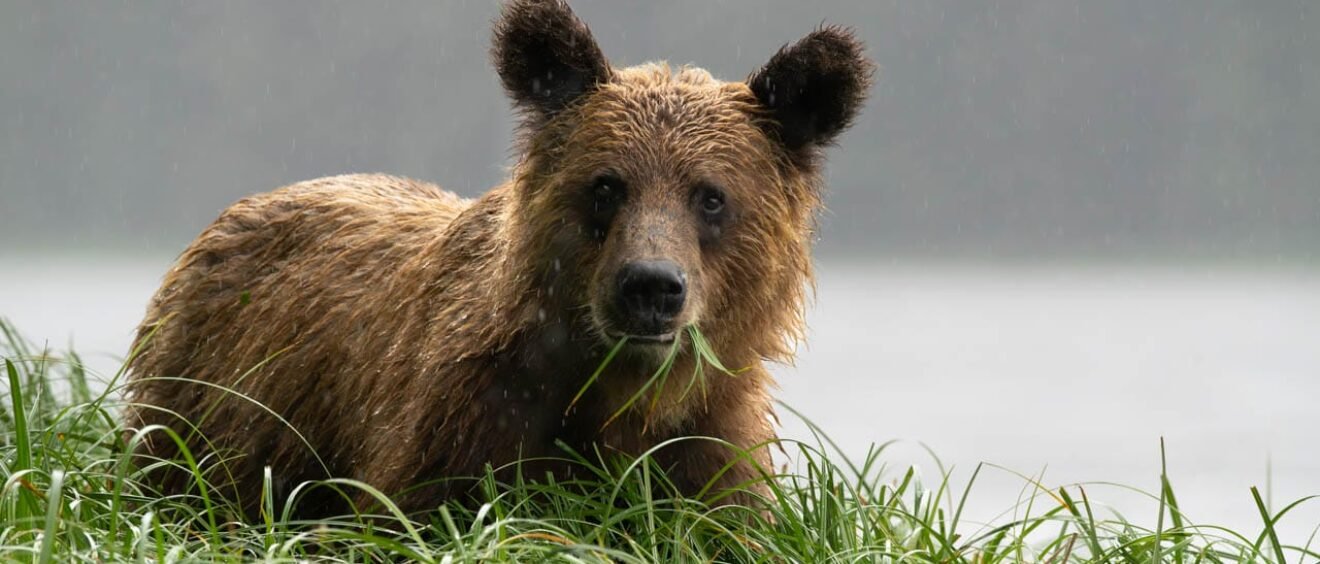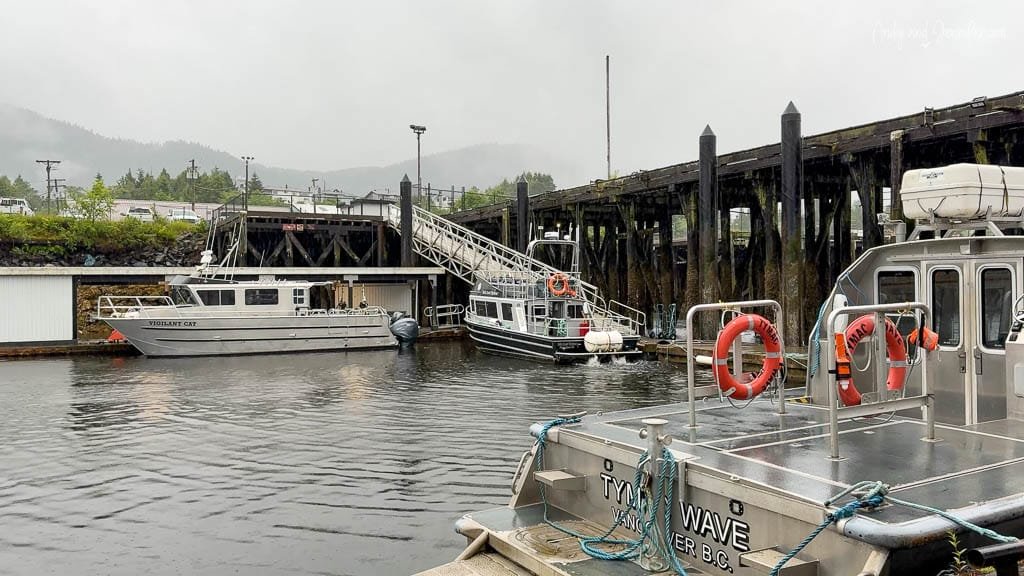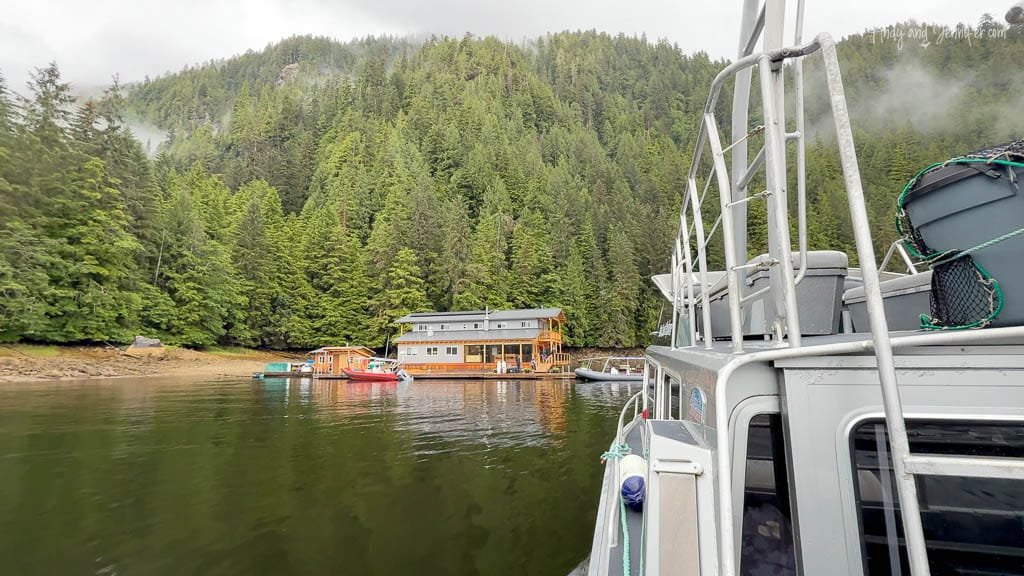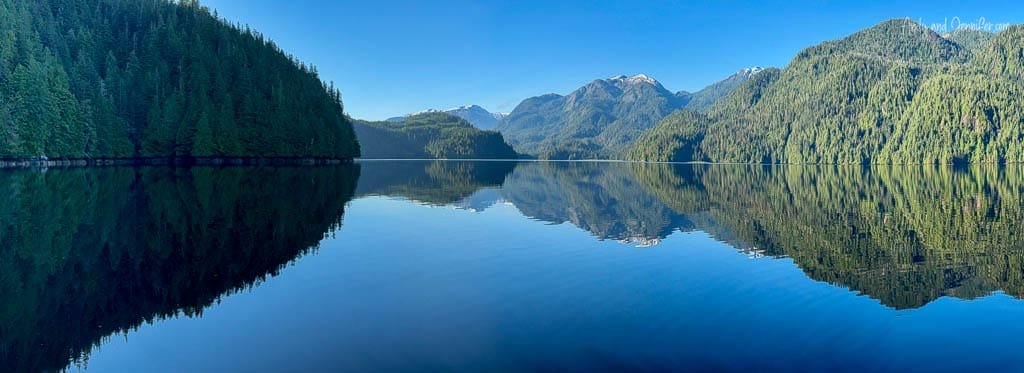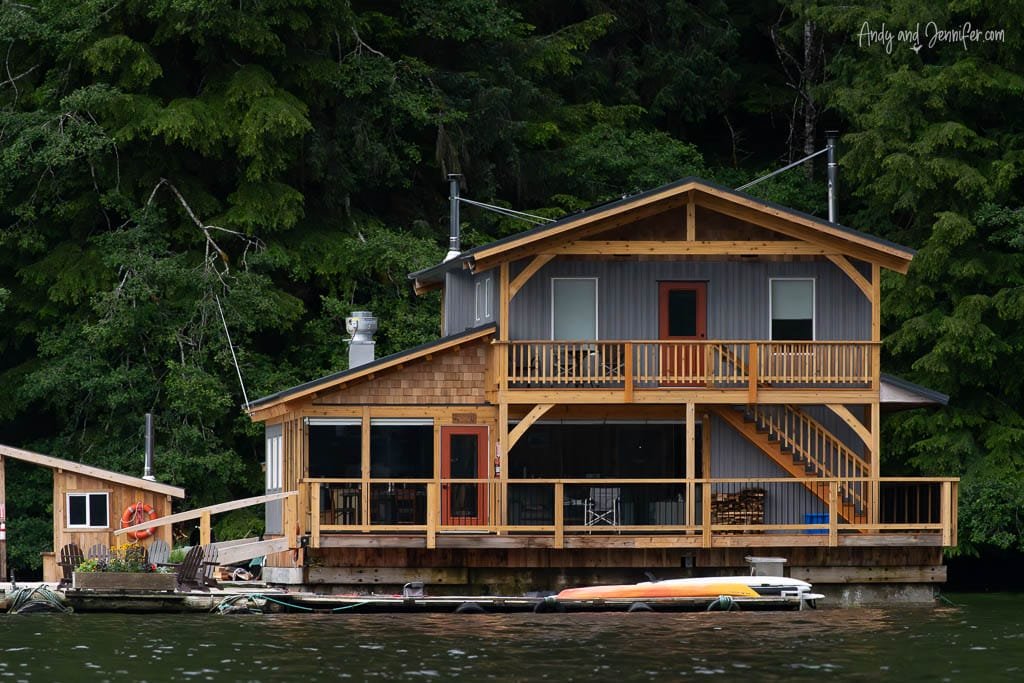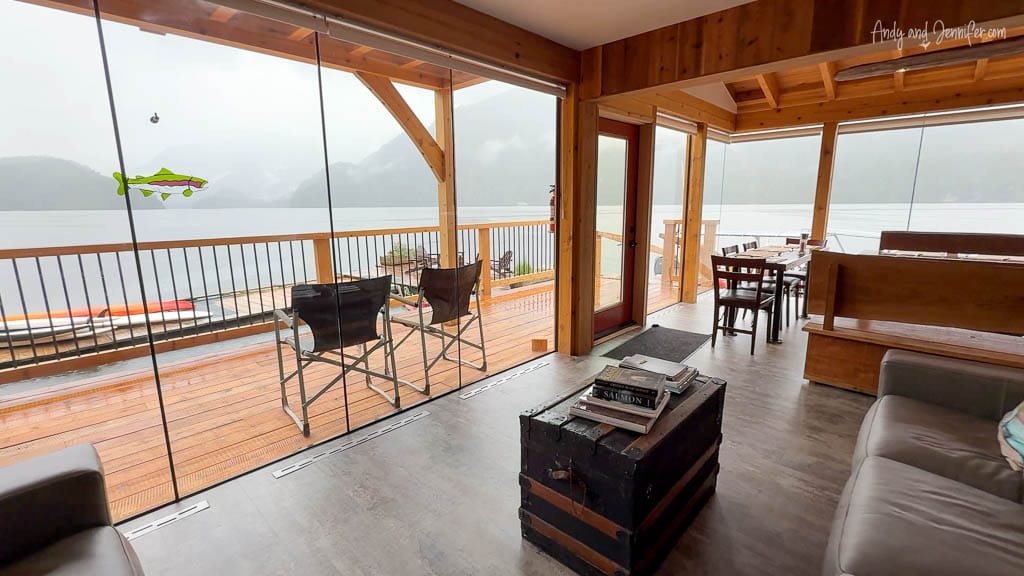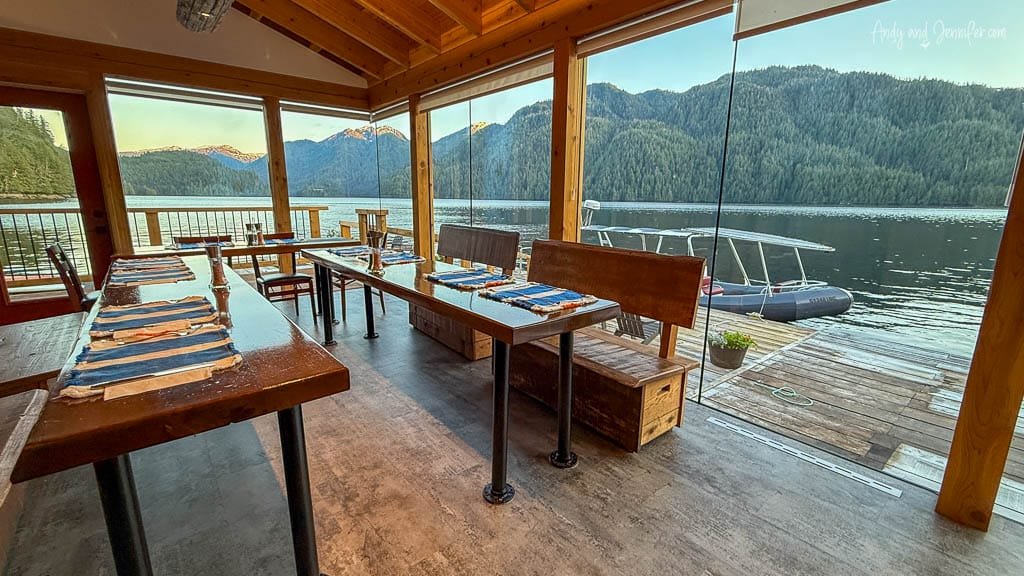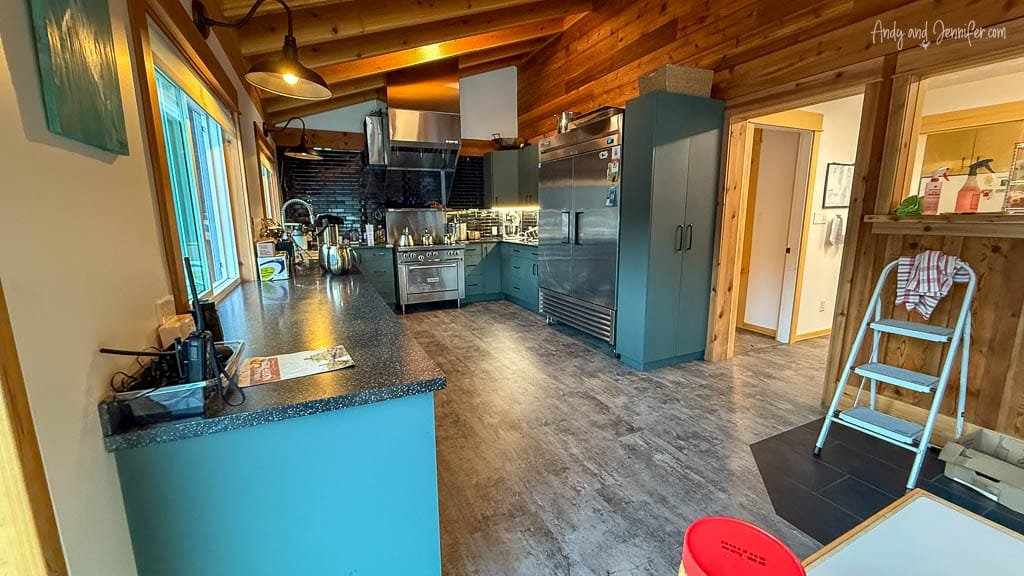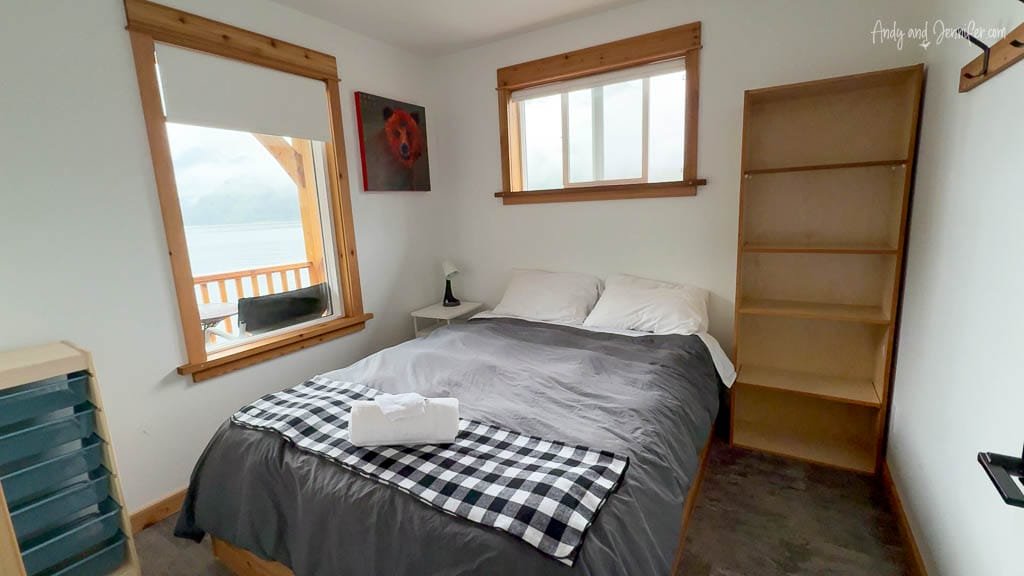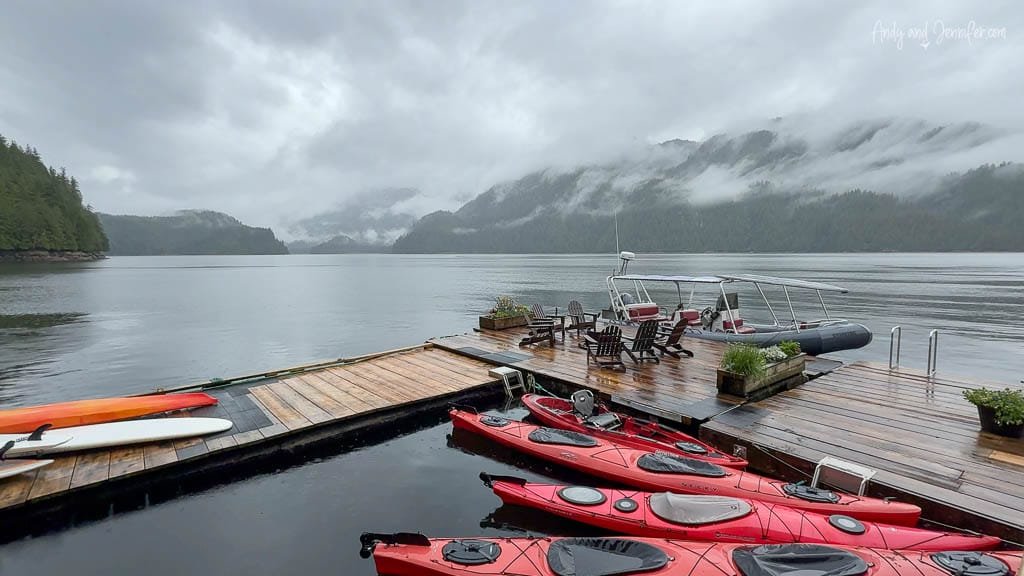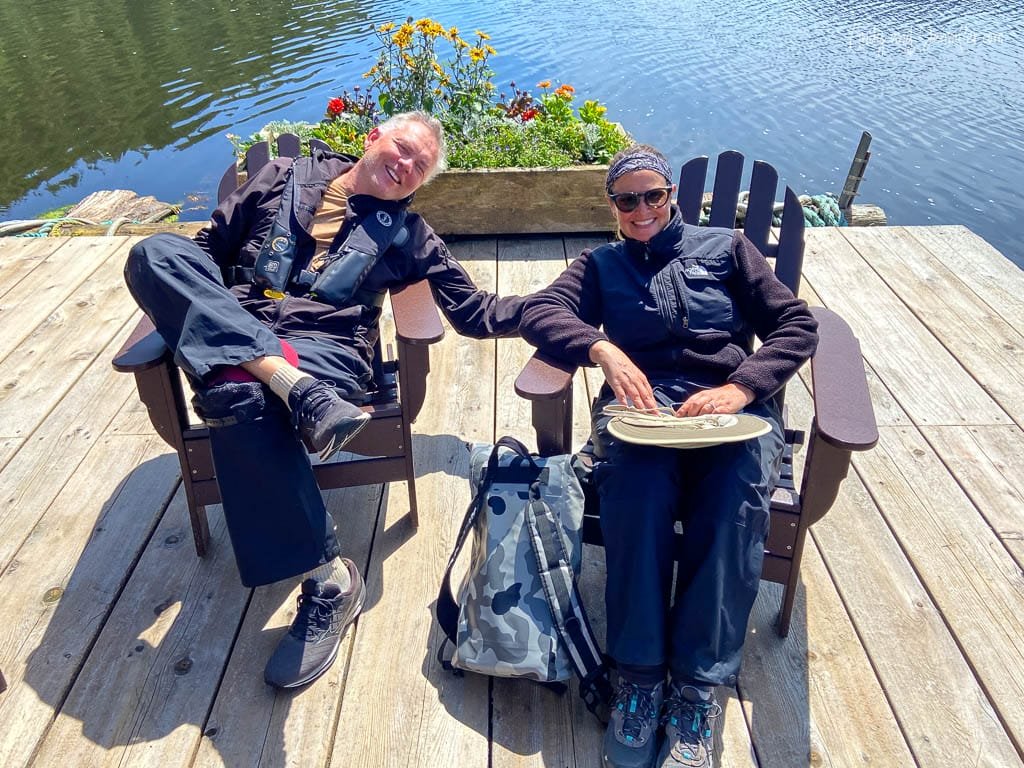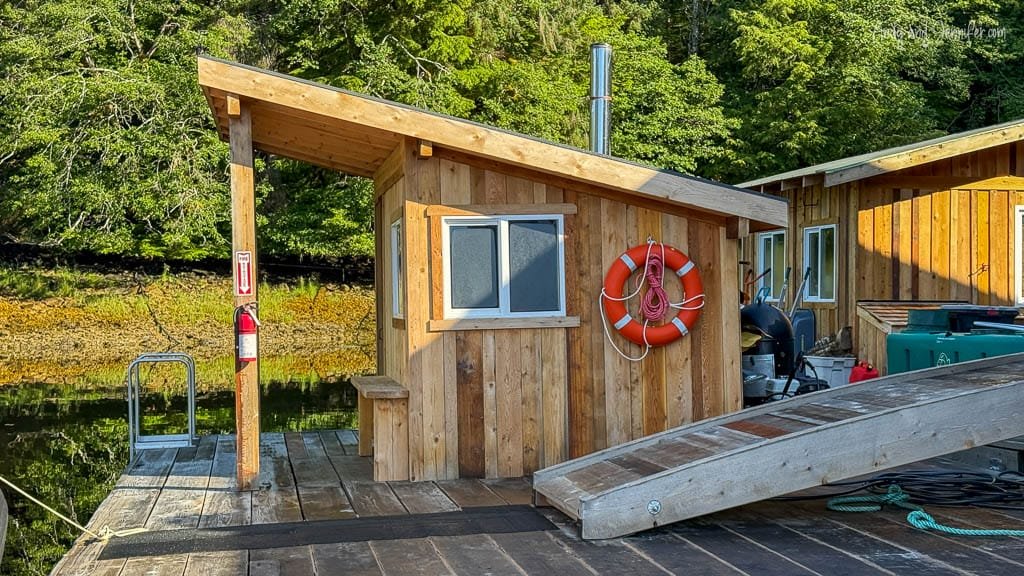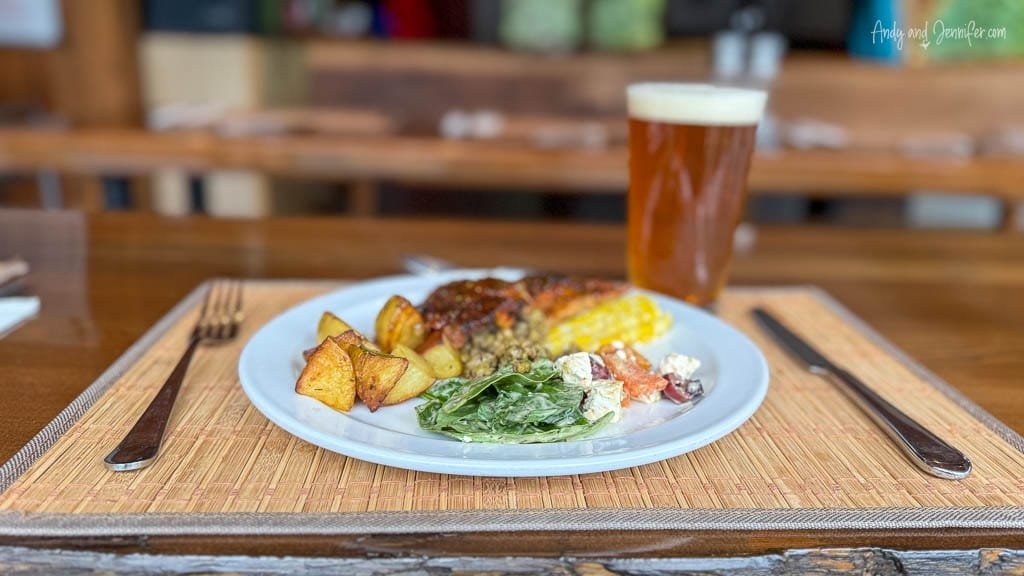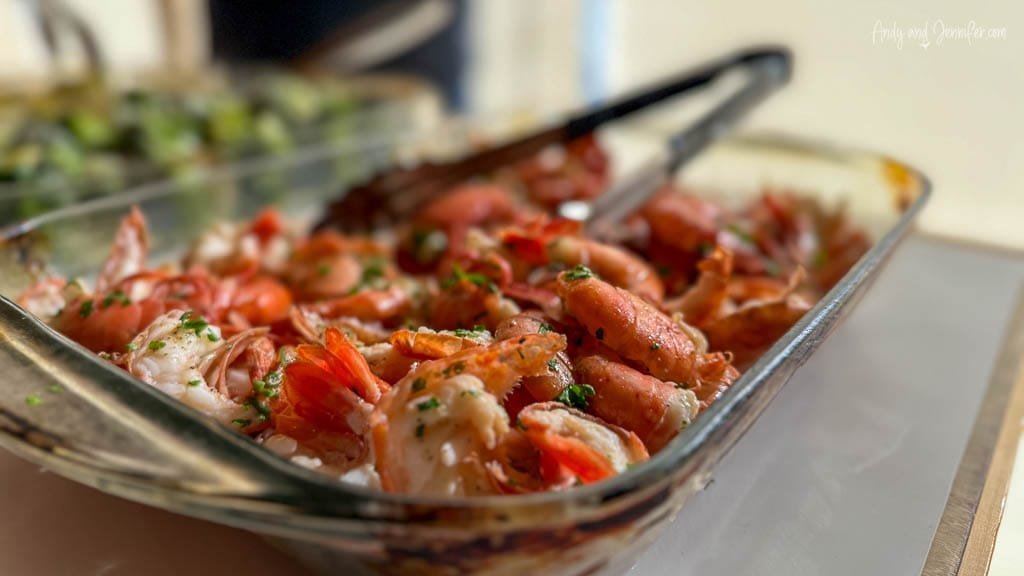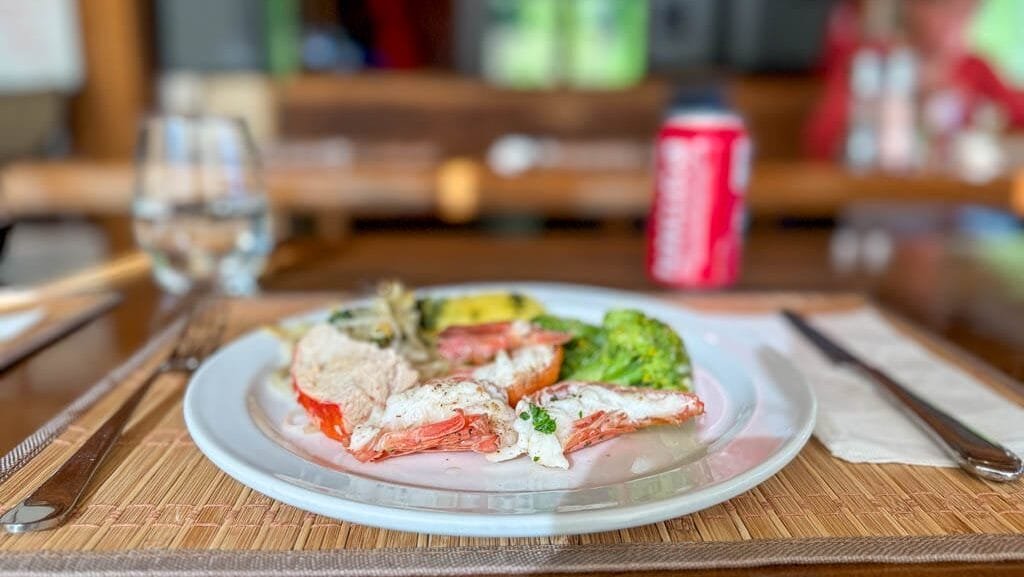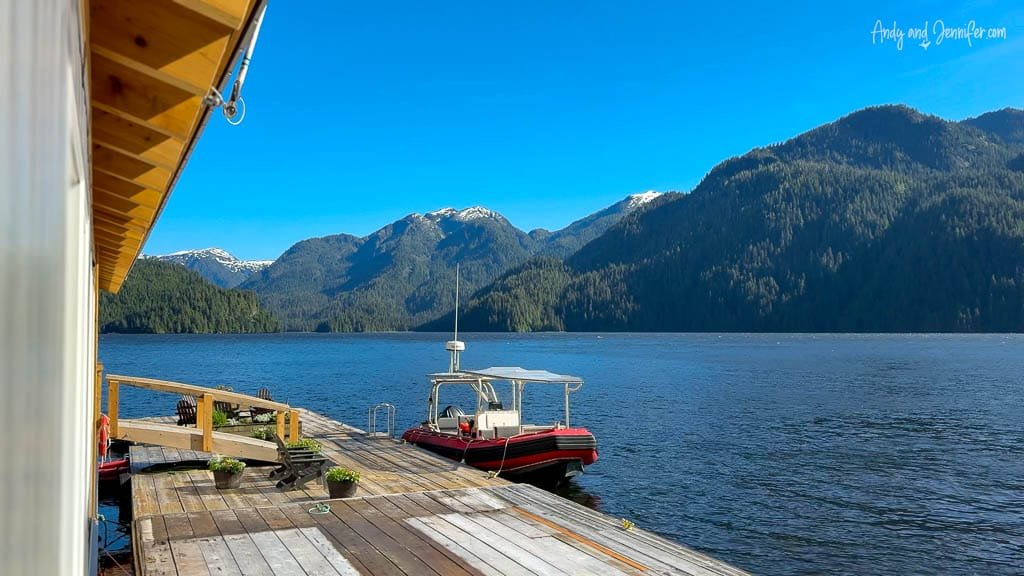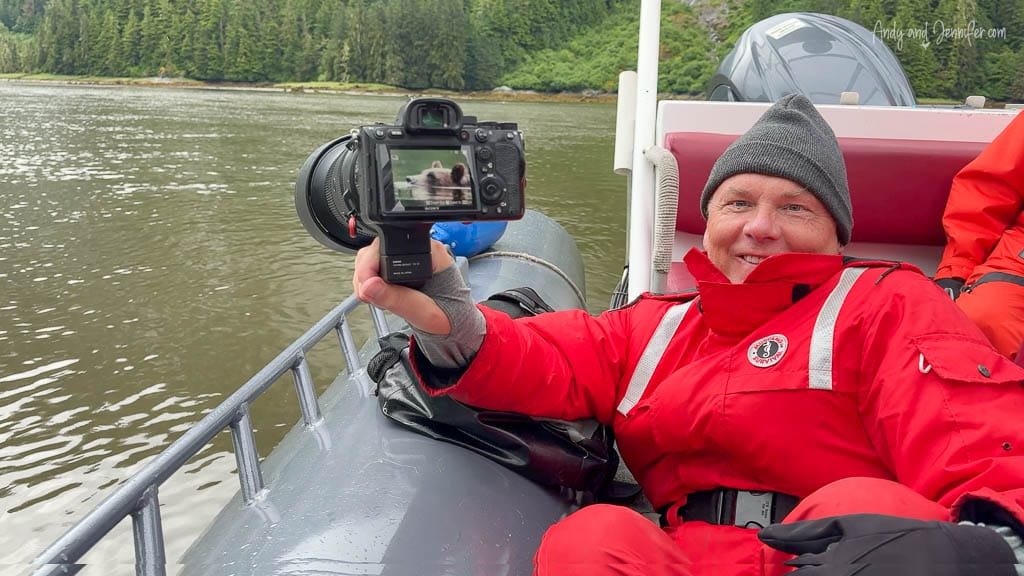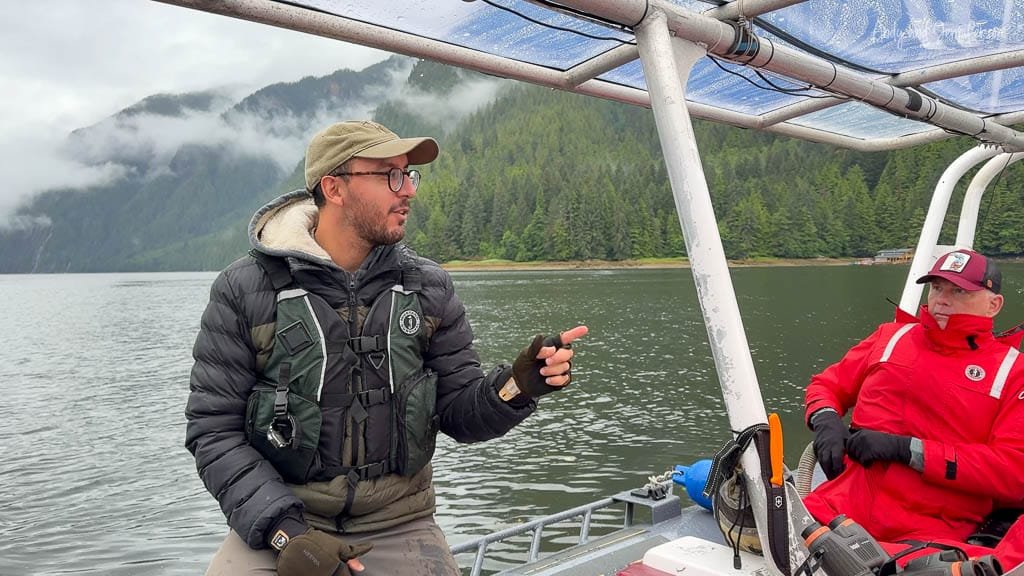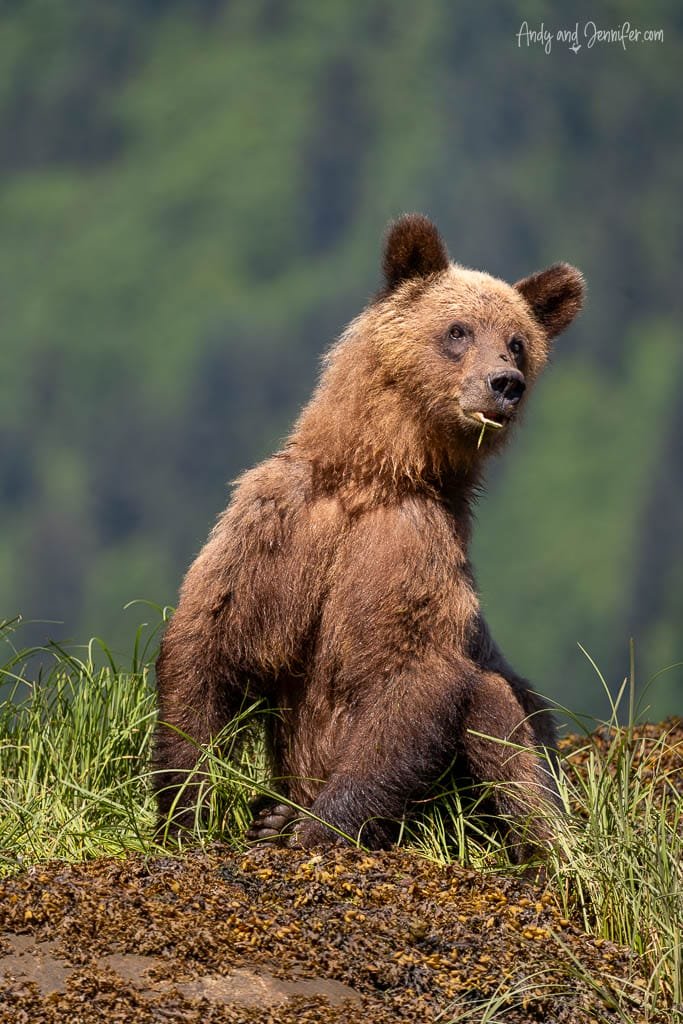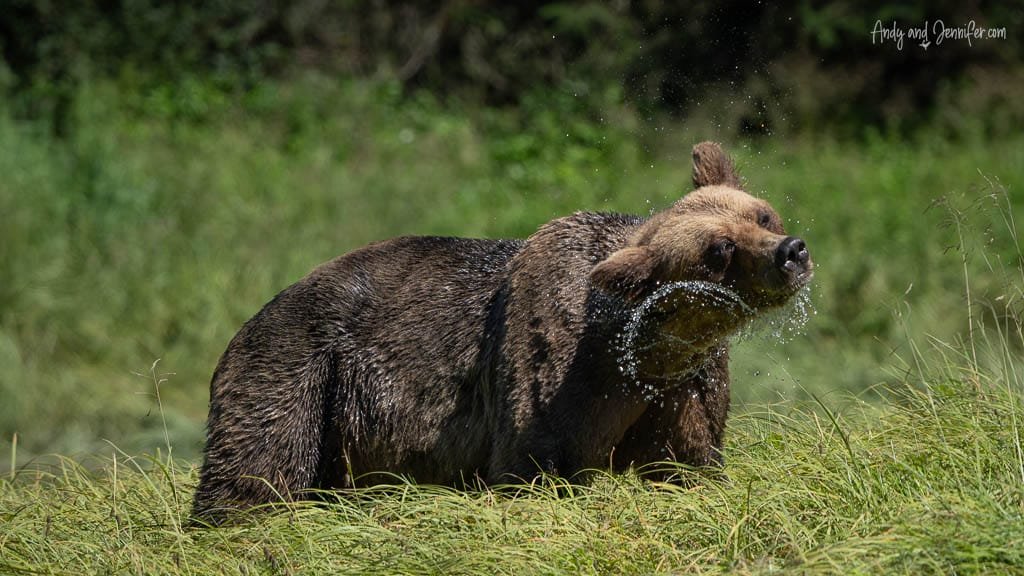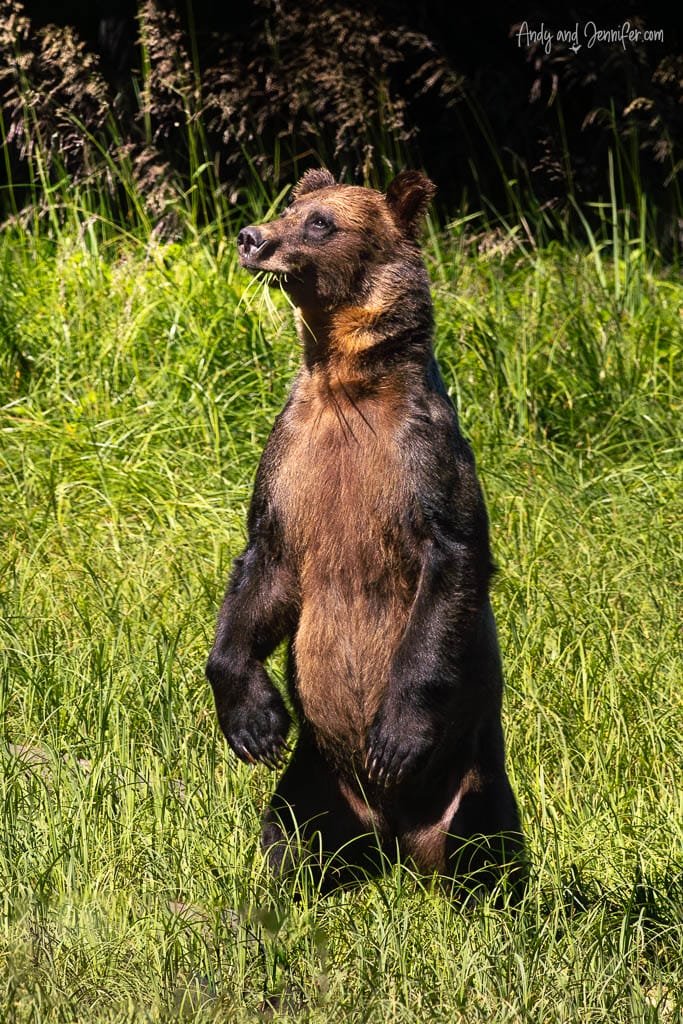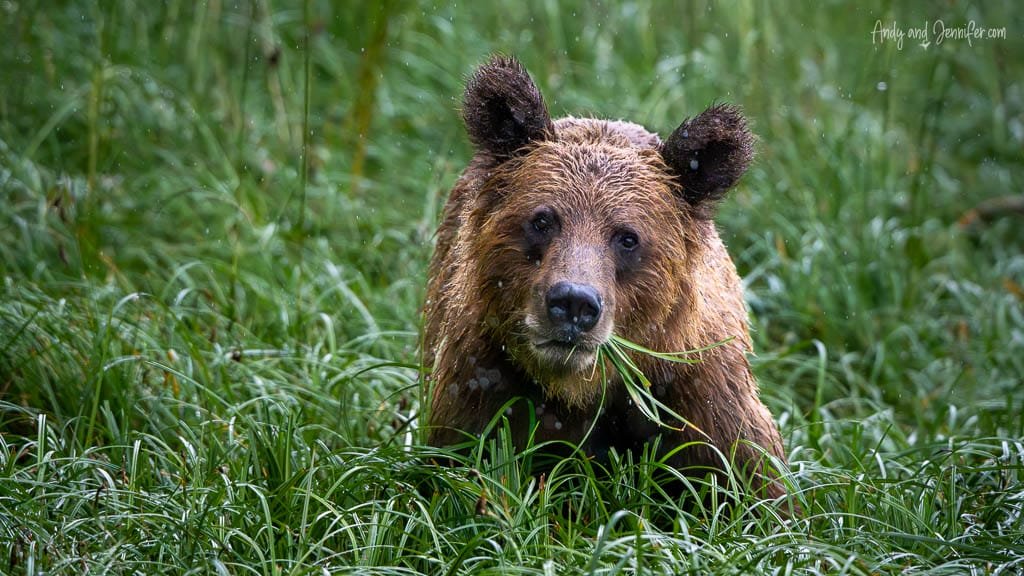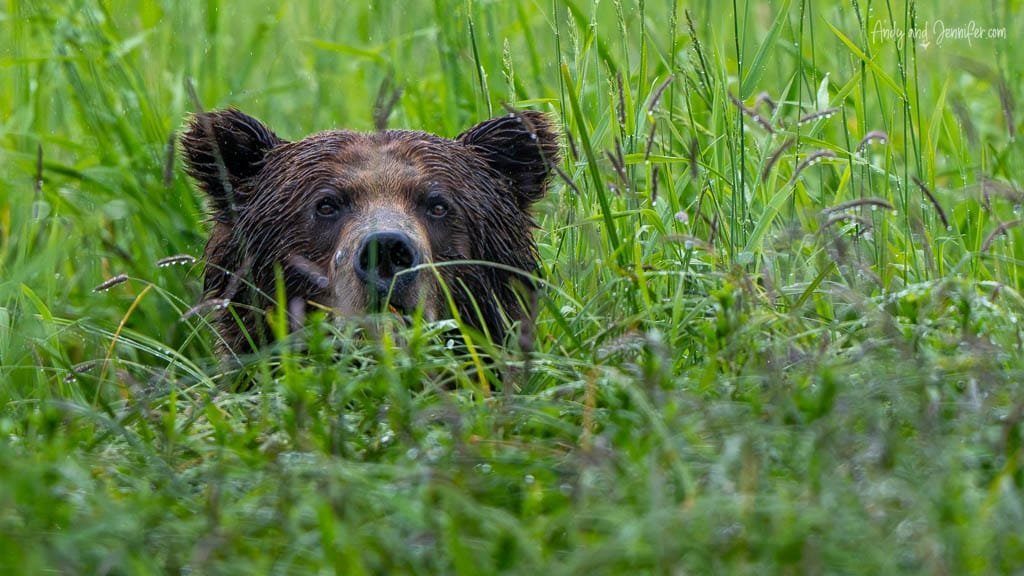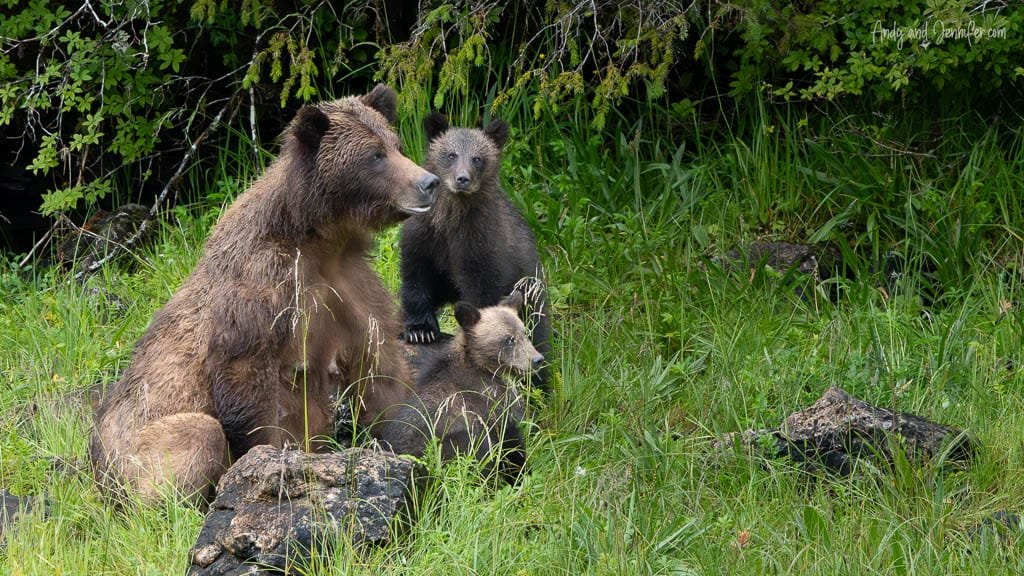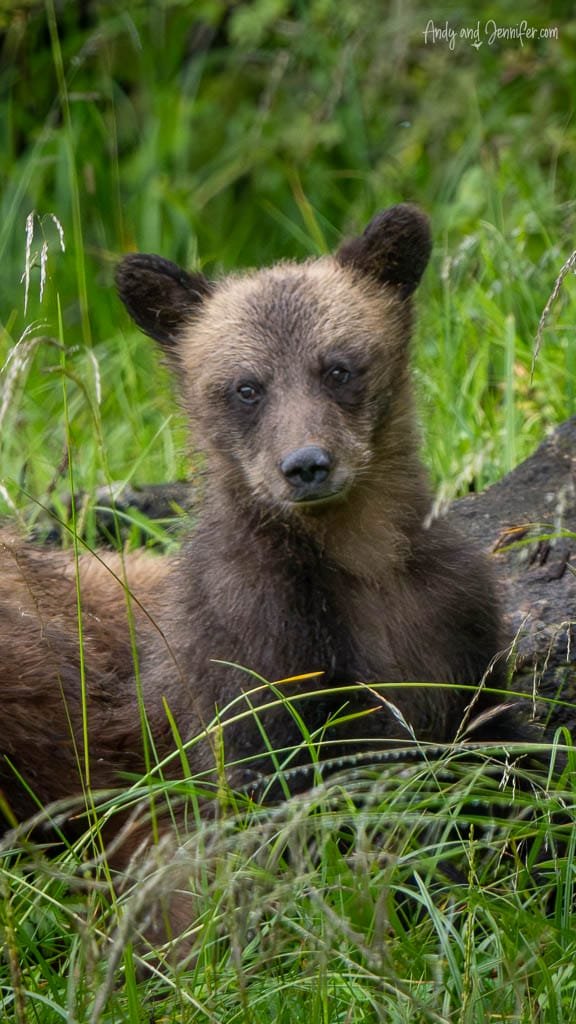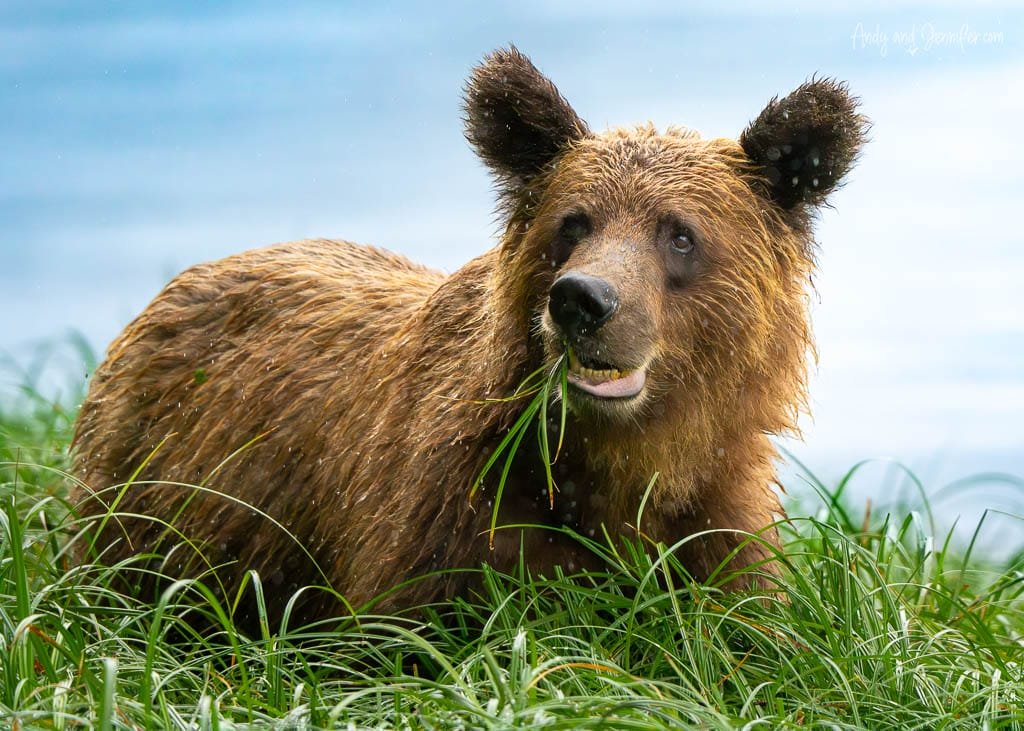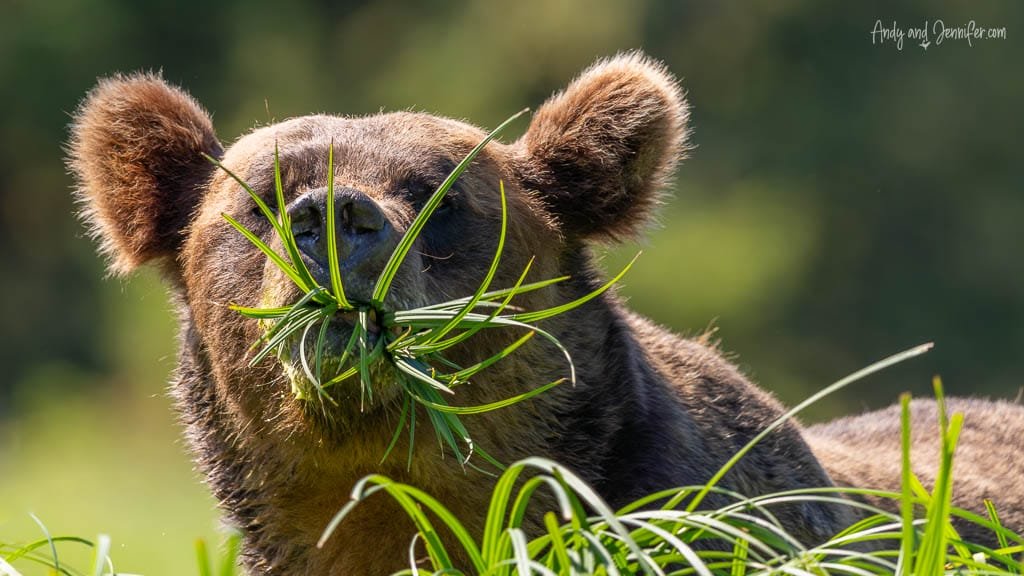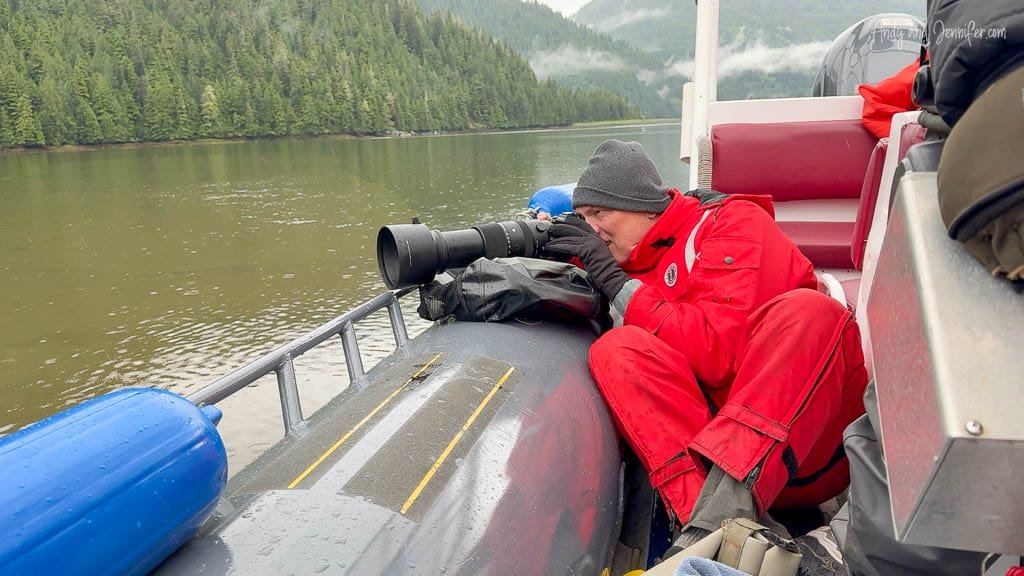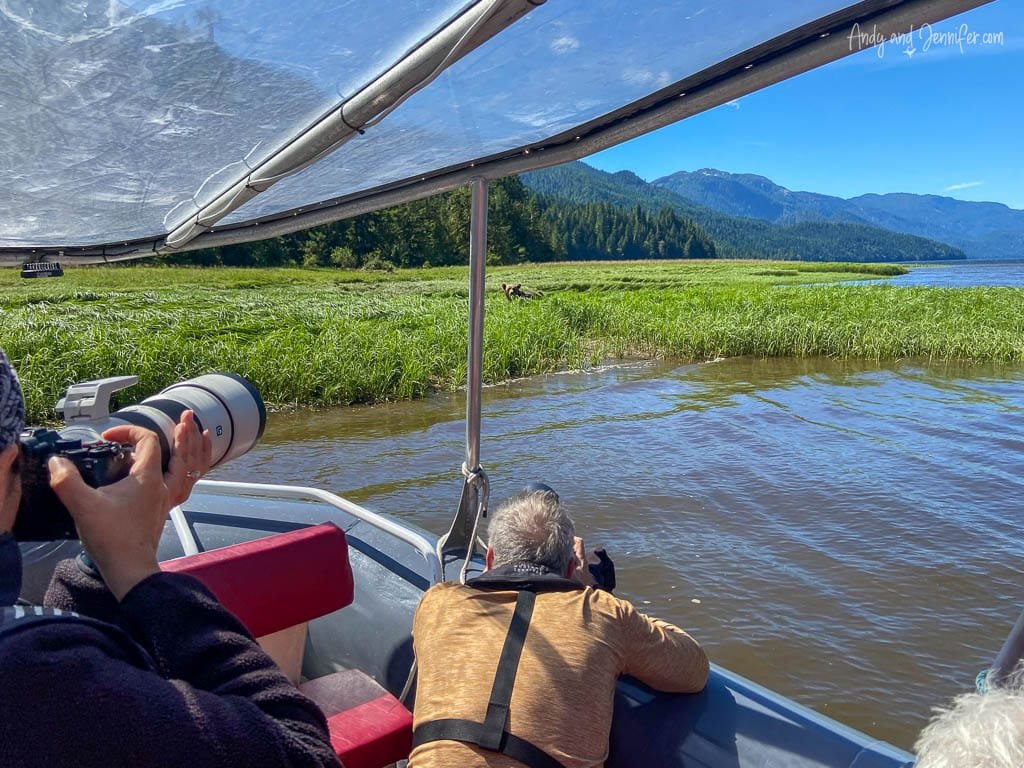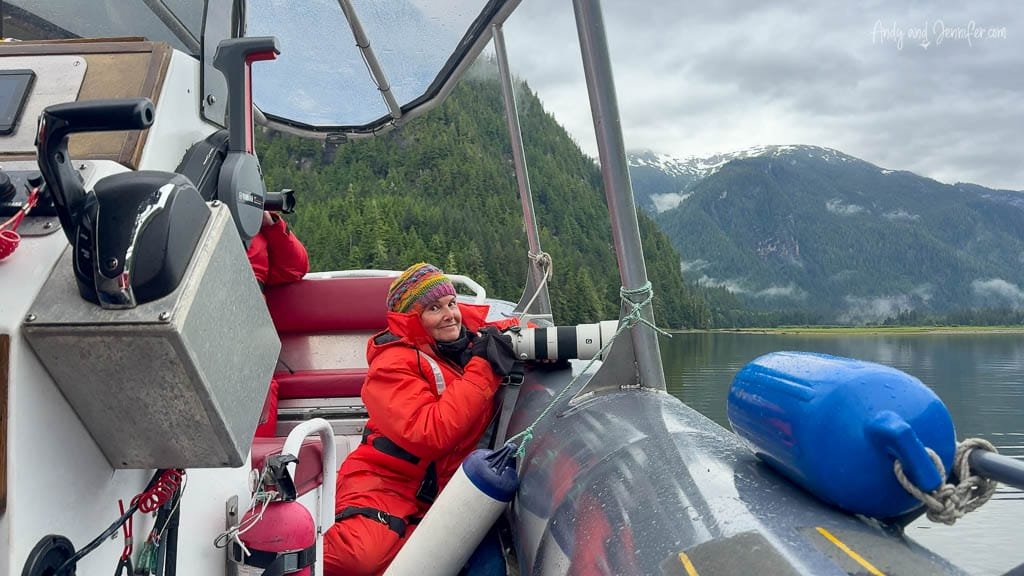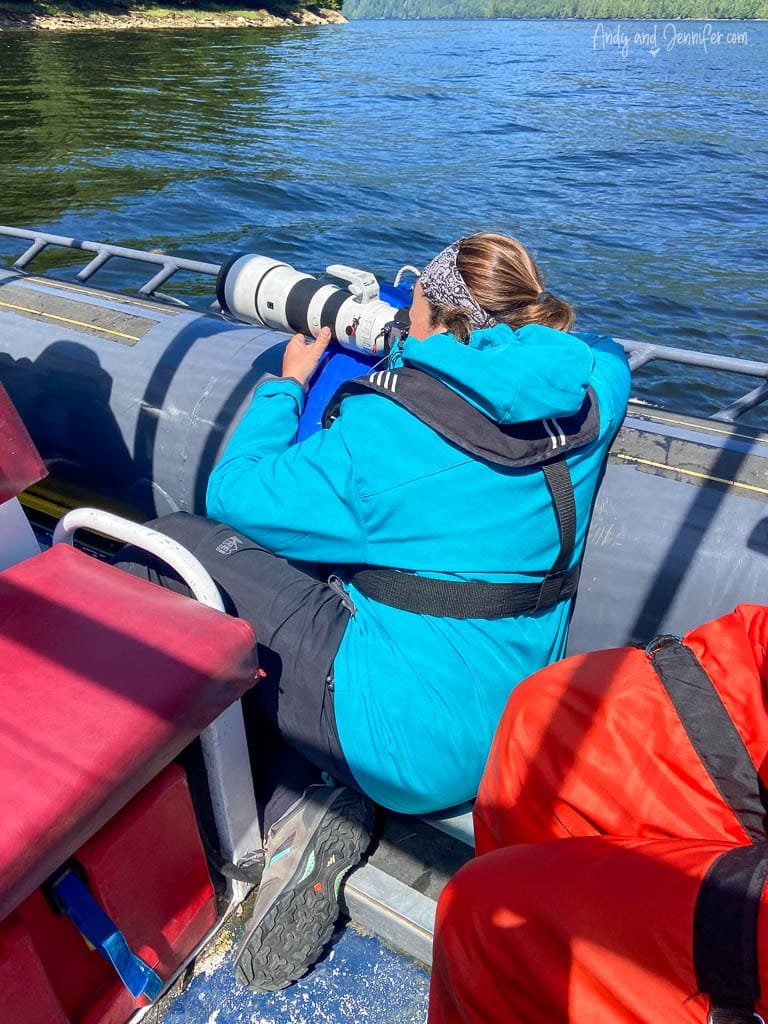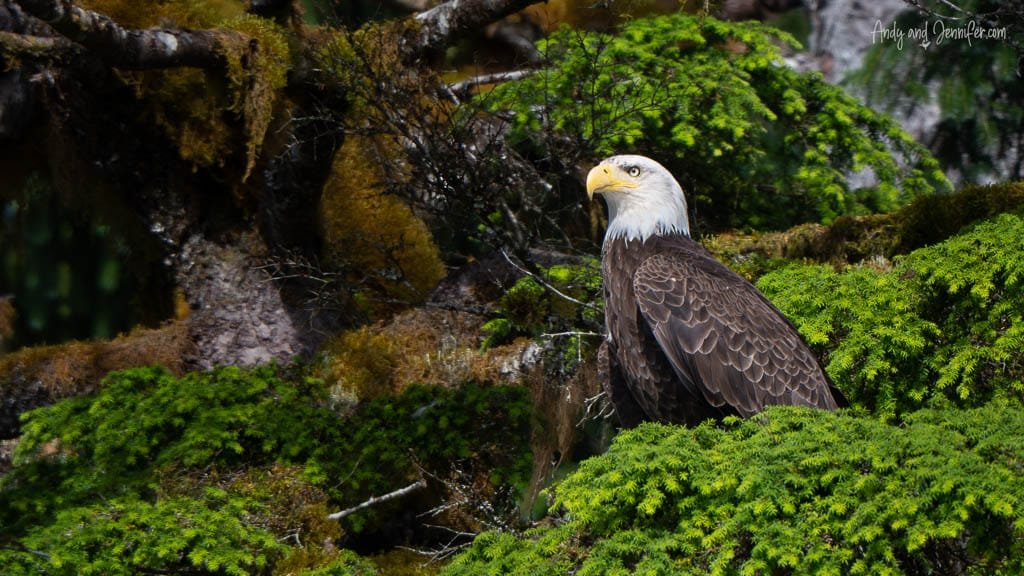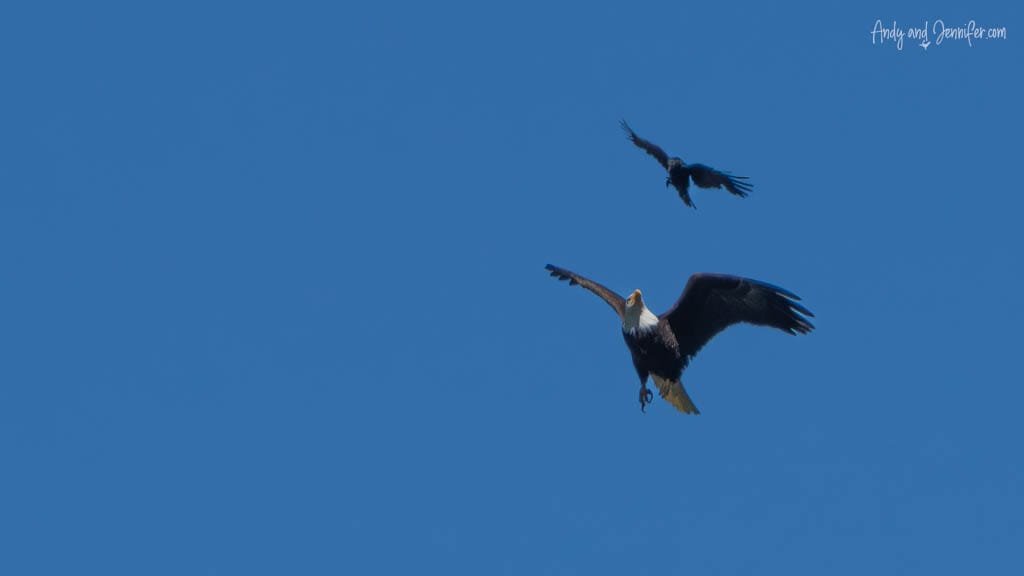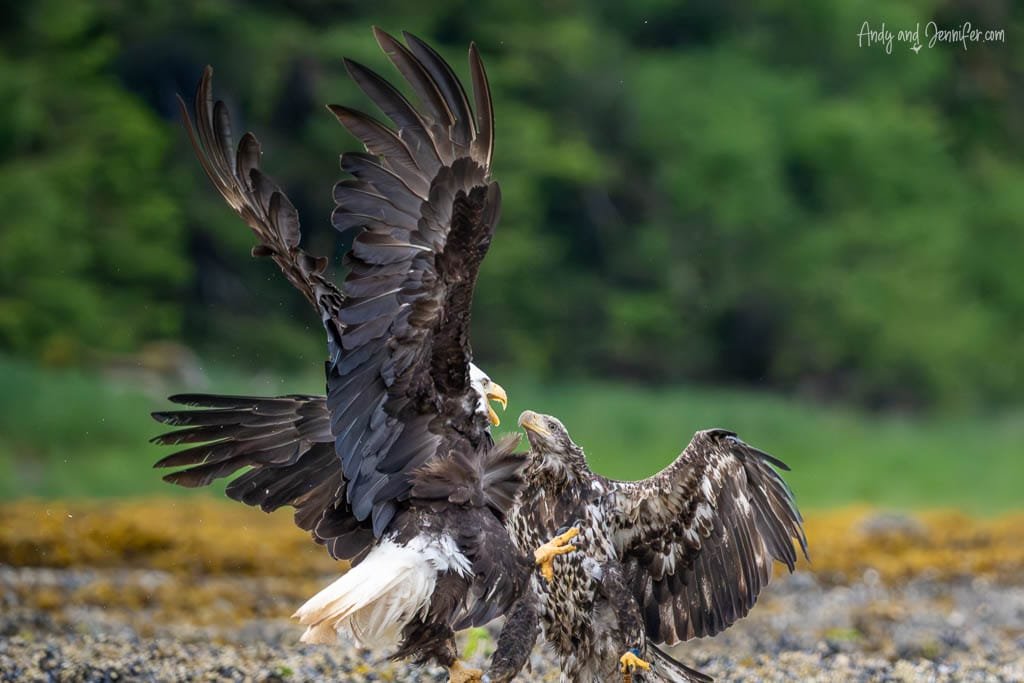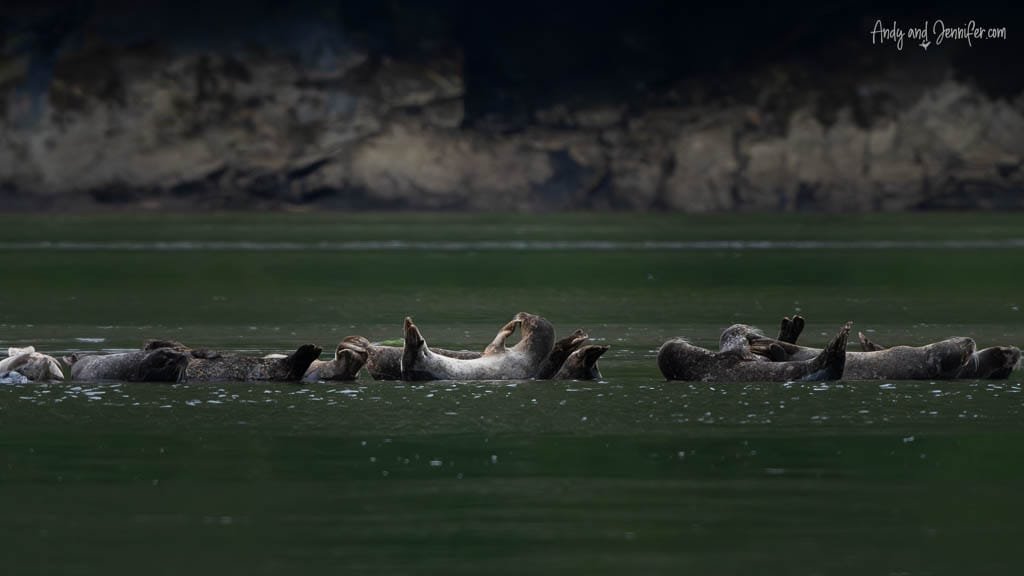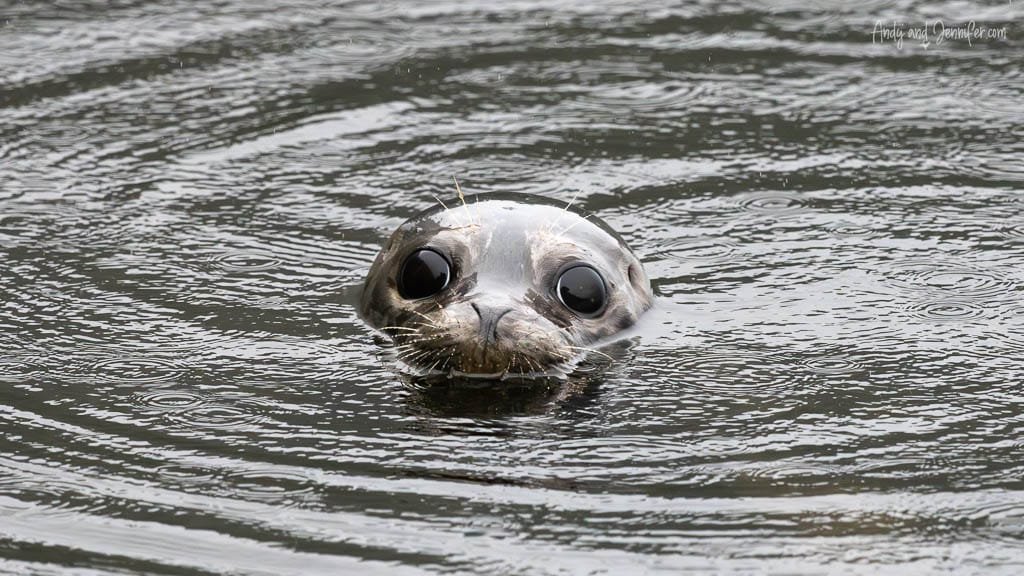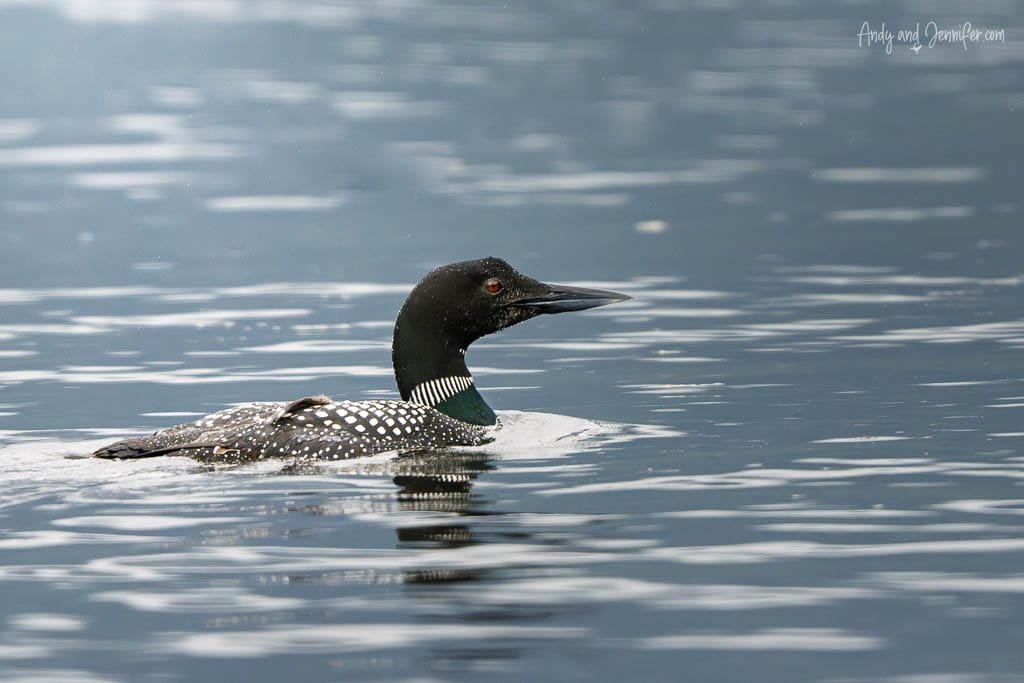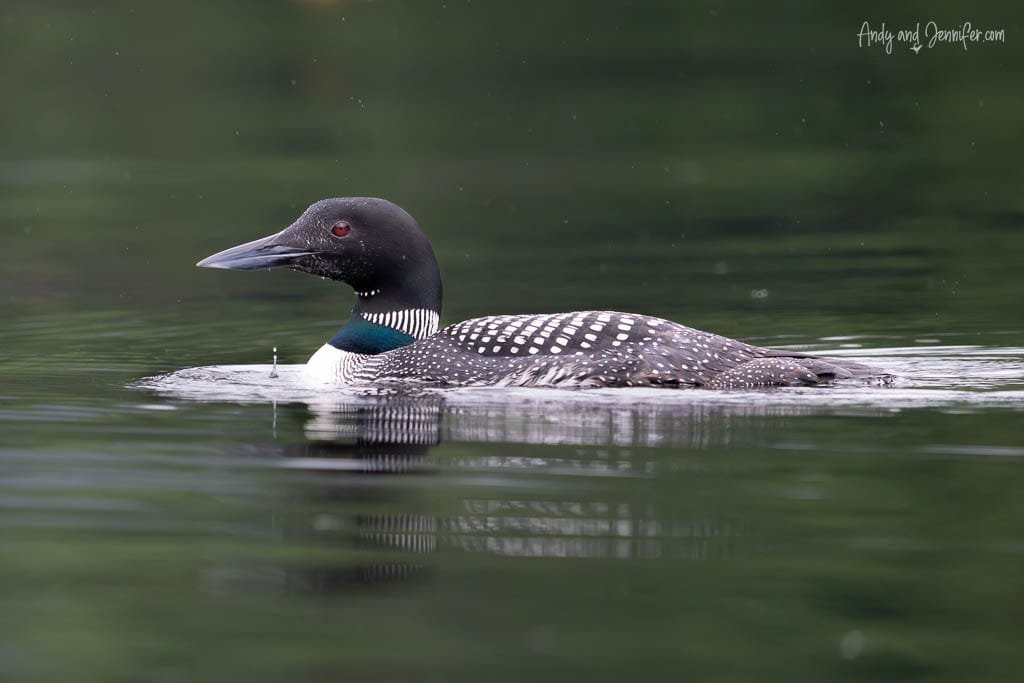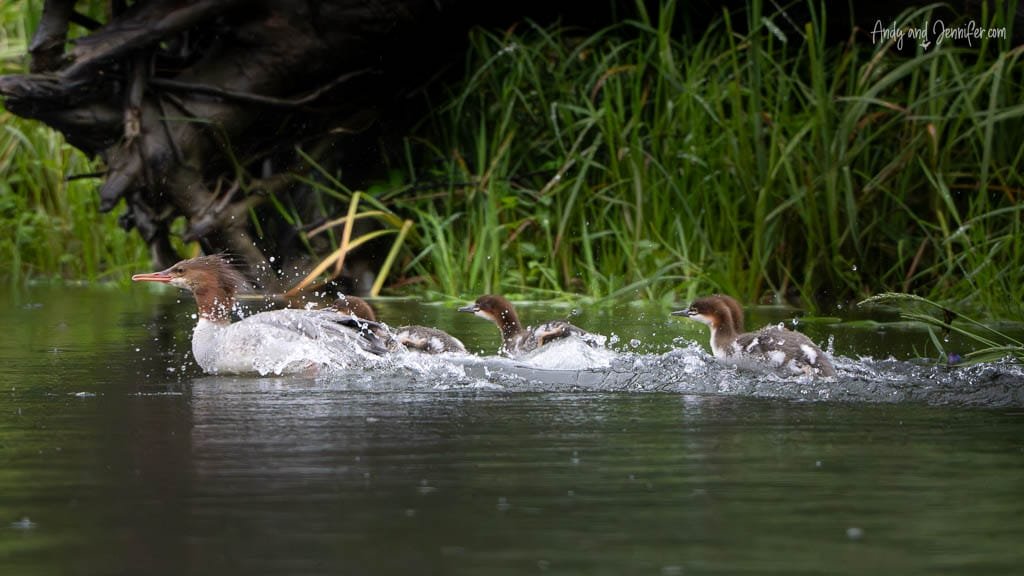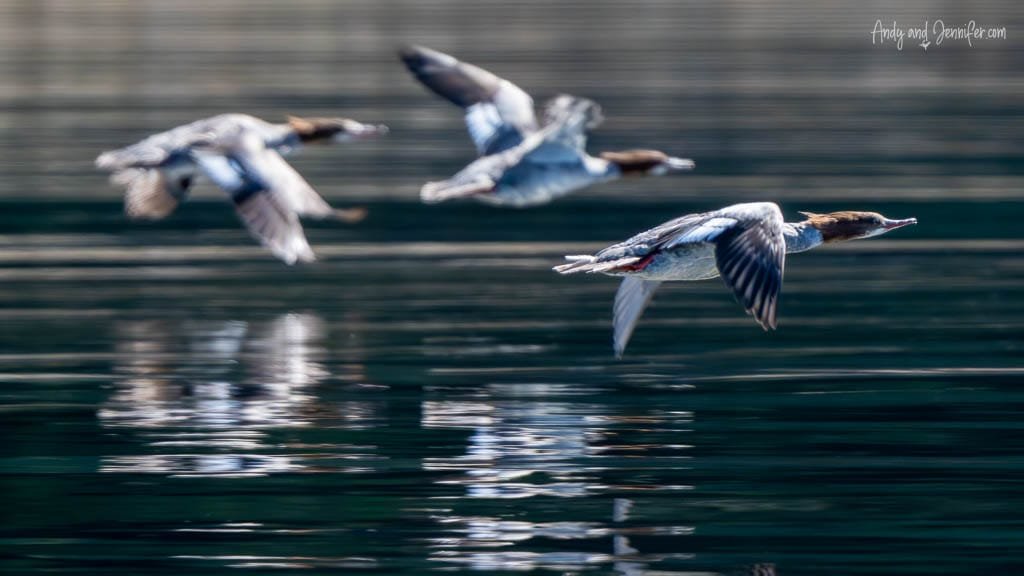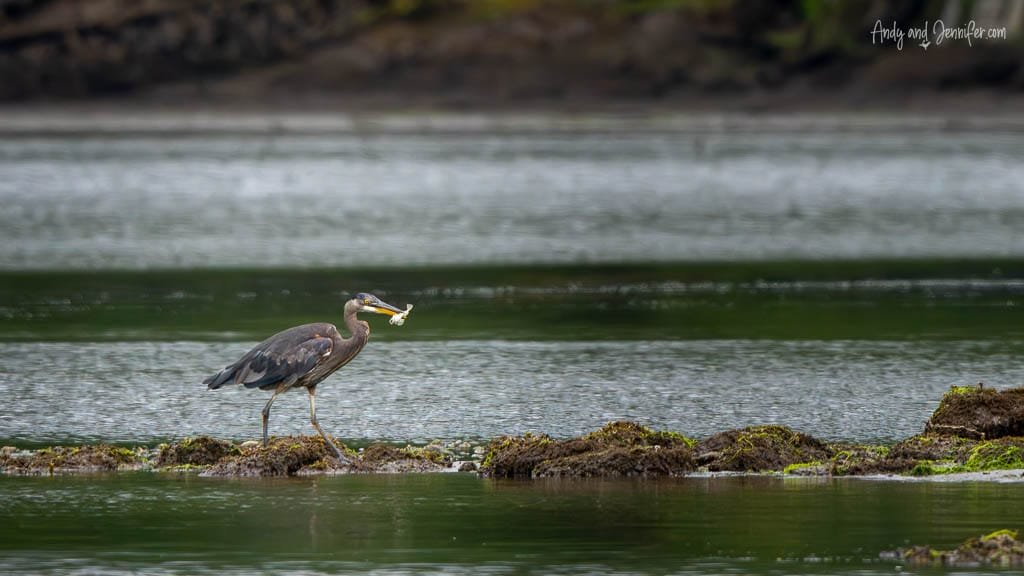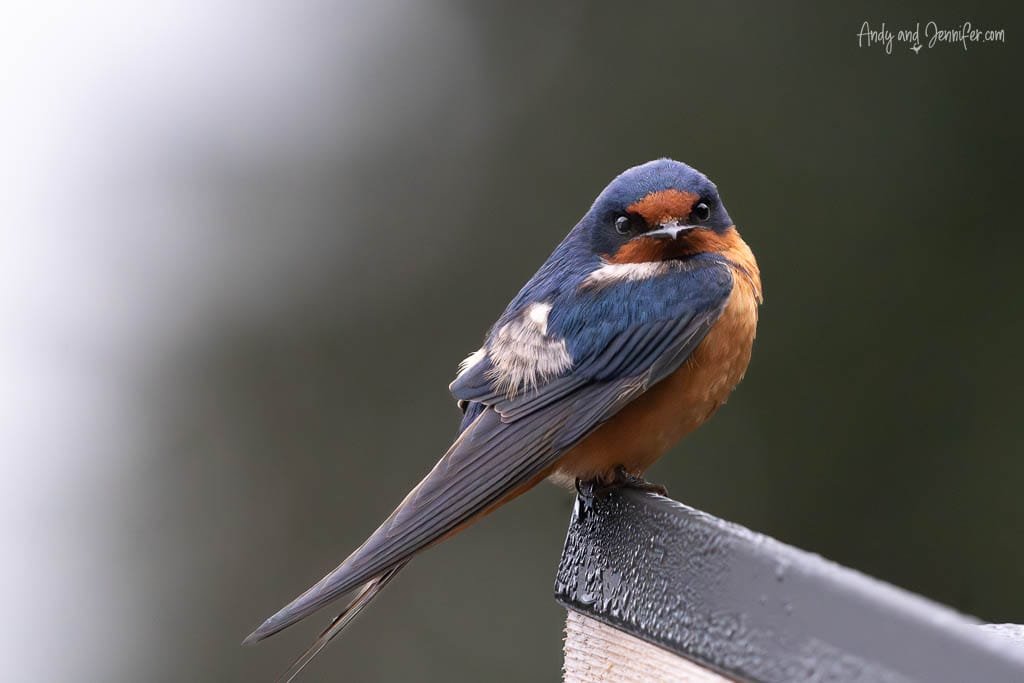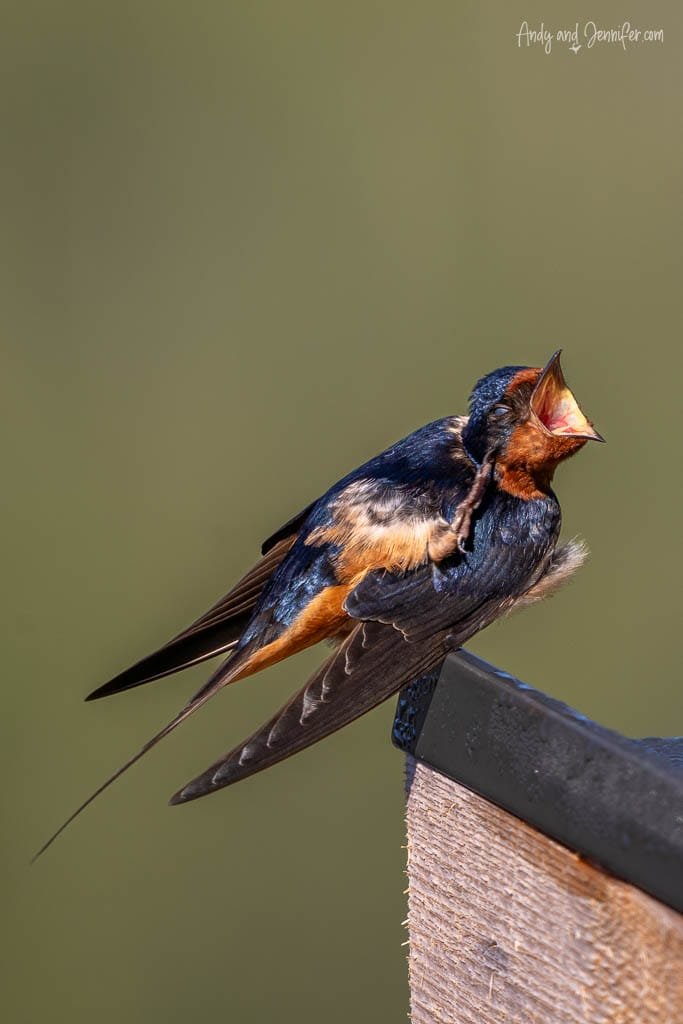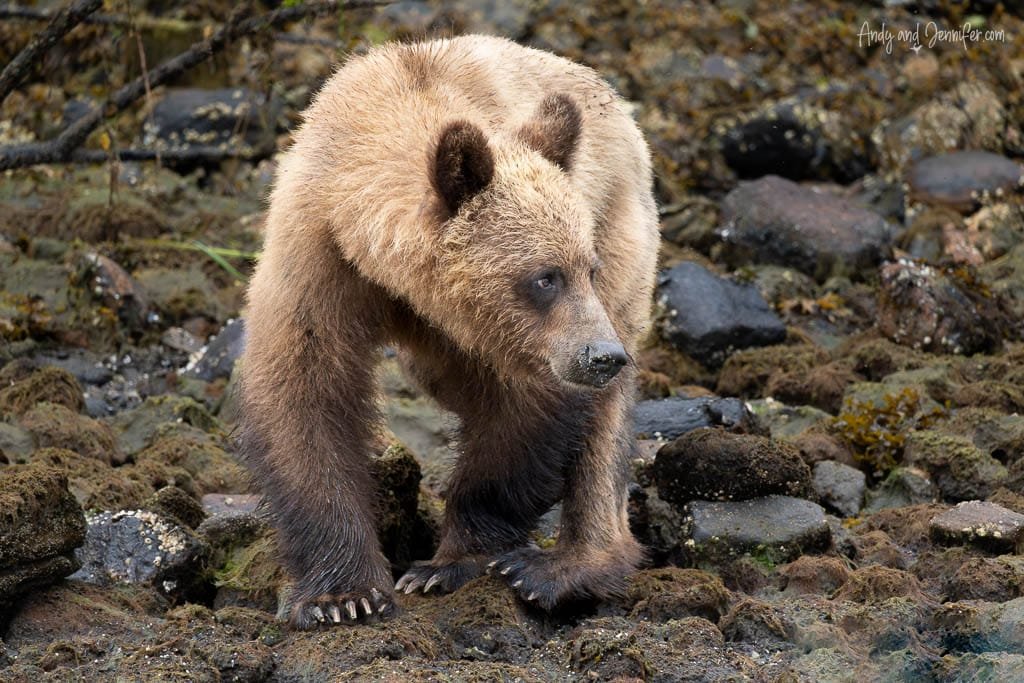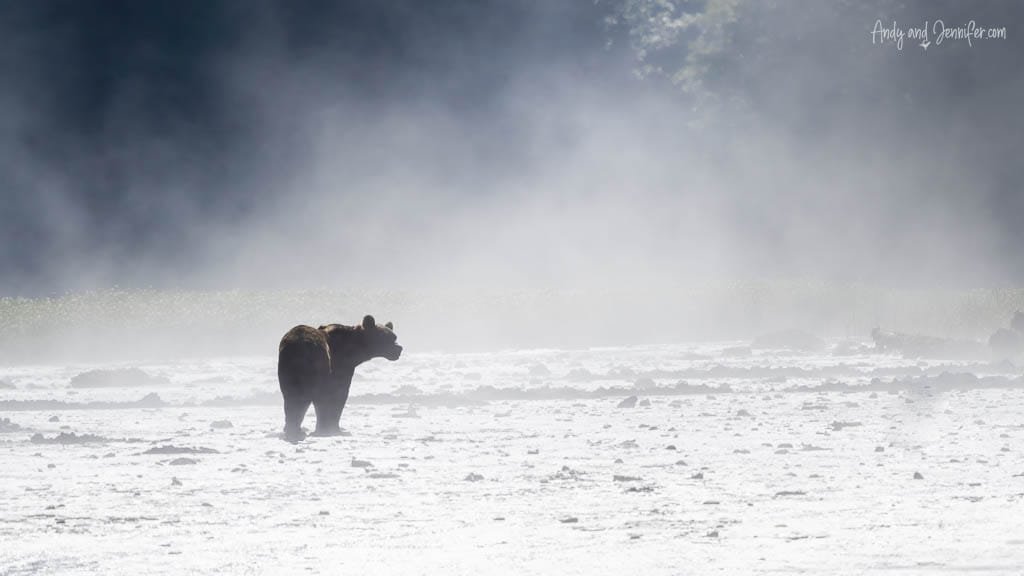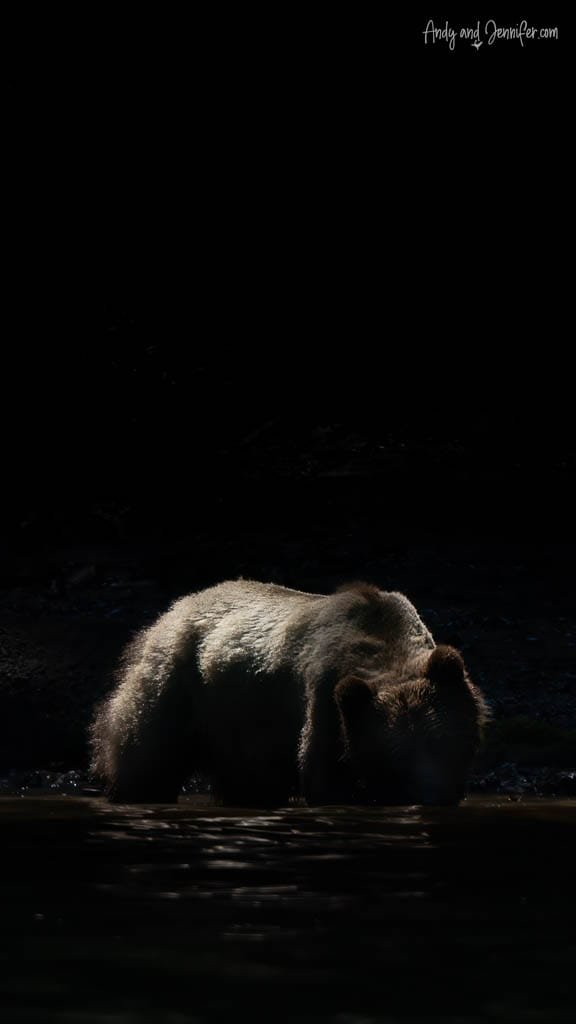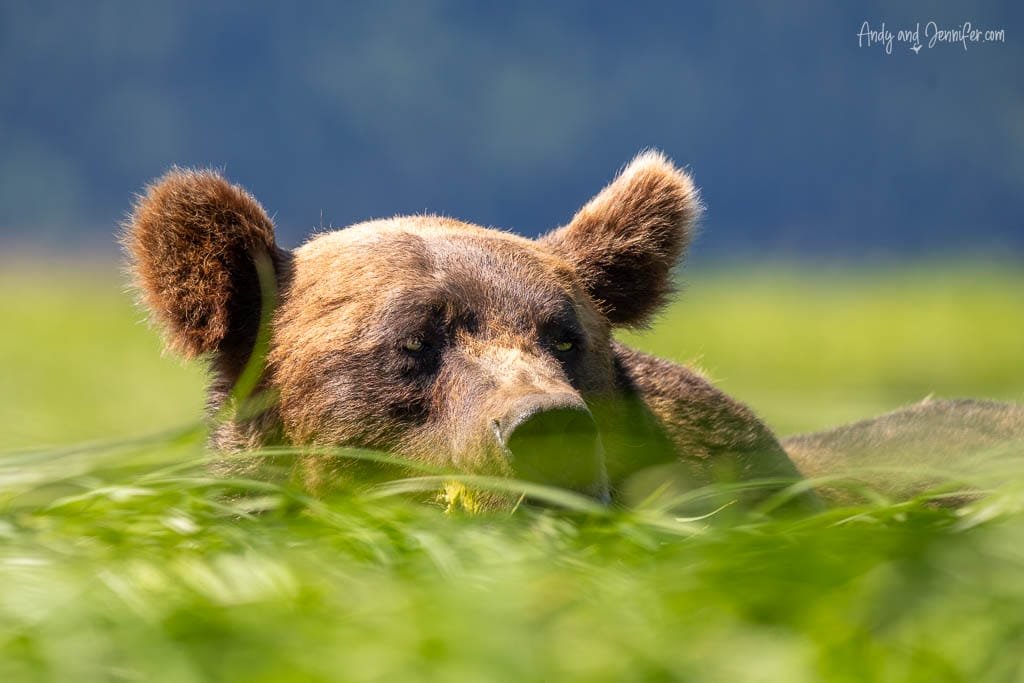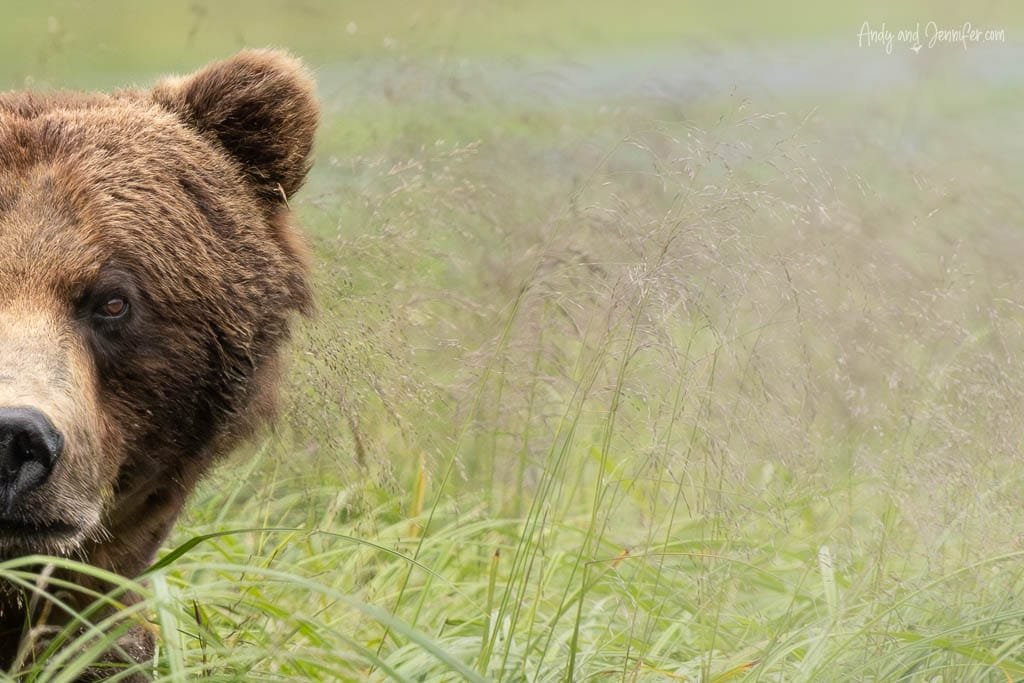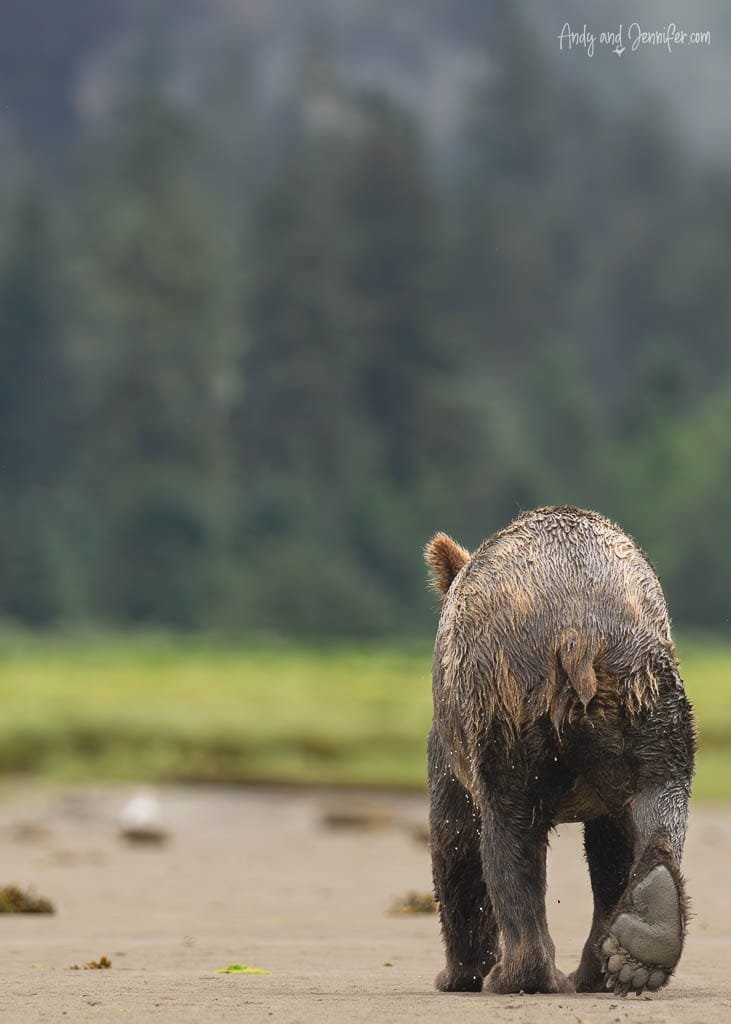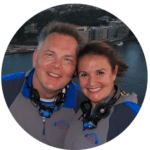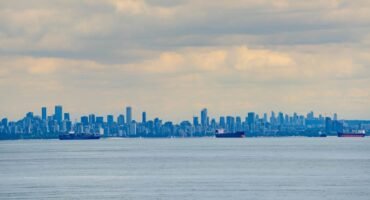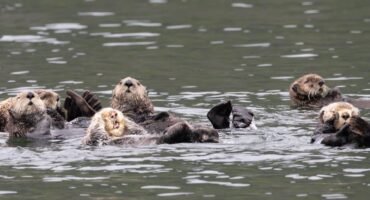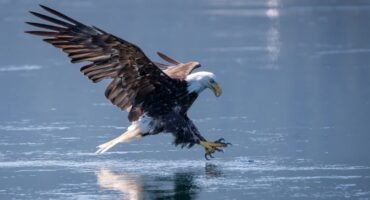(This post is part of our wildlife photography expedition to Canada – links to other parts of the trip will be added once we finish them)
Getting to the Khutzeymateen from Prince Rupert
After three days in Prince Rupert, it was finally time to depart for the Khutzeymateen. Trips leave from the commercial dock, with check-in at 7:15 a.m. for a 7:45 a.m. departure We grabbed coffee and doughnuts from Tim Horton’s before heading down. It was pouring rain, but the forecast promised improvement over the next few days.
The parking lot was full of tradesmen: loggers, electricians, and others waiting for their work boats. We felt slightly out of place as the only tourists. At 7:30 our transfer boat arrived, along with another group of four travellers. The vessel had an indoor cabin as well as open seating at the back and on top. Given the weather, everyone stayed inside for the 90-minute journey.
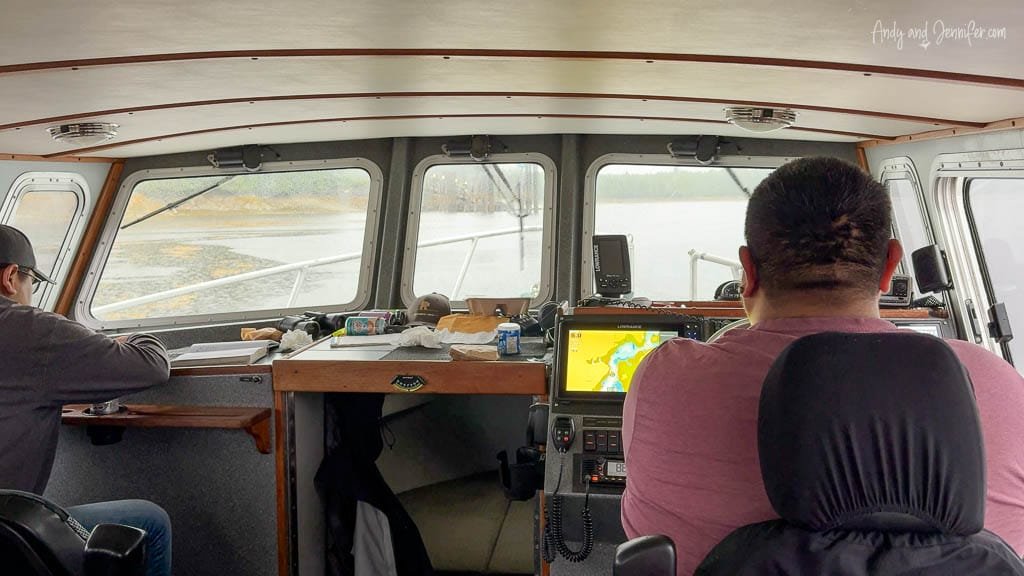
The other guests, from Edmonton, were instantly friendly and conversation flowed easily. We swapped stories about wildlife trips: we shared our adventure to Triangle Island with its tufted and horned puffins, while they pulled out photos of Atlantic puffins from Newfoundland. The idea of sitting beside puffins on a cliff, rather than trying to photograph them from a bouncing zodiac, was irresistible. They also passed along a valuable tip: reserve a rental car early, as Newfoundland is an island and cars are limited. We stopped briefly at Lax Kw’alaams, a Tsimshian village, to pick up a lodge staff member starting her shift. Bald eagles circled the harbour there, adding to the anticipation as we approached the inlet.
As the boat slowed and the
Khutzeymateen Wilderness Lodge came into view, the first impression was unforgettable: forested mountains plunging straight into the sea, the sound of eagles overhead, and calm, sheltered waters over 100 feet deep.
The Floating Lodge Experience
“Khutzeymateen” (pronounced kootz-ee-mah-teen) is a Tsimshian word meaning confined space for salmon and bears.
The lodge has operated for years, but this was a brand-new floating structure built in 2025. I really didn’t notice it moving until we got back to land after 5 days. I did a timelapse from the lodge and it was actually moving a lot!
The lodge itself is cosy, with a bright common area that warmed up in the afternoon sun. Rufous hummingbirds regularly buzzed the windows, especially attracted to the red survival suits drying outside. On the dock there was a fire pit, kayaks, SUPs, and fishing gear for those with permits.
And yes, there is internet, which came in handy when I decided to book a rental car for Newfoundland (once I worked out where that was), “just in case”.
Meals at the Lodge
Chef Neil kept us more than well fed. Despite dietary restrictions (my onion allergy and another guest with coeliac disease), he went above and beyond to accommodate everyone. It was such a relief not to have to worry about hidden ingredients.
Meals were served family style, which I loved because you can take exactly what you want and try a bit of everything:
-
First breakfast (7 a.m.): fruit, yoghurt, pastries, and coffee.
-
Second breakfast (8 a.m.): hot dishes like pancakes, bacon or sausage, and eggs cooked every way.
-
Lunch (12:30 p.m.): soup plus three or so mains.
-
Between Meal Snacks: there was always a bowl of fruit, or a plate of freshly bakes cookies, or my favourite, dried mango.
-
Dinner (6:30 p.m.): four hearty dishes always followed by a delicious dessert.
Bear Watching Excursions in the Khutzeymateen
The lodge has two boats, each comfortable for six guests. With a full lodge, they split into two groups.
We wore one-piece survival suits at first, but soon switched to our own rain gear and life vests as the suits were simply too warm in the July sun.
There were two excursions per day, each about three hours. The morning trip started around 9 a.m., with the afternoon timed to the tides (starting between 1:45 and 3 p.m.). Trips sometimes stretched longer if the sightings were especially good.
Tip: Never skip an excursion. There is no such thing as bad weather, only bad clothing and poor preparation.If you are tired, you can sleep when you get home.
Guides Franco and Gerren were outstanding and alternated taking us out on excursions. Both clearly love what they do, and it showed not just in spotting bears but in positioning us perfectly for photography.
They also knew the animals’ behaviour intimately. “This one often stands when it hears a boat, get ready.” “The tide is rising, so this bear will need to swim across.” “Watch for the shake when it comes out of the water.” Their calls meant we were ready for moments we might otherwise have missed. They got us close, but always with respect for the bears’ space. I never once felt we were intruding or altering the bears’ natural behaviour.
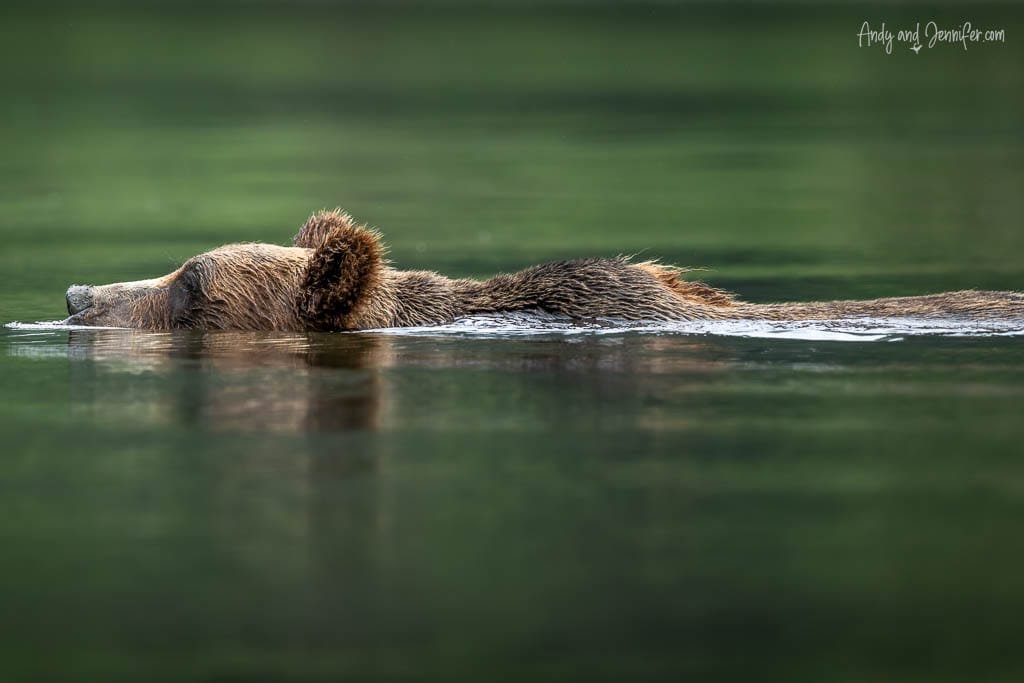
Weather in Mid-July
This part of the world is known for variable weather. We had everything from rain to blazing sunshine and glass-calm seas followed by wind-whipped chop. Each condition brought its own magic for photography though.
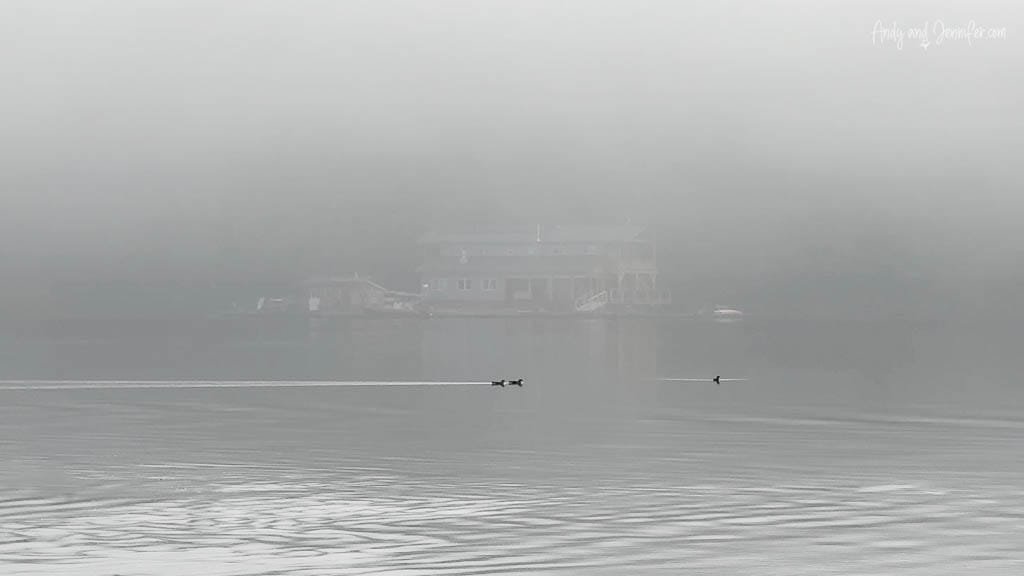
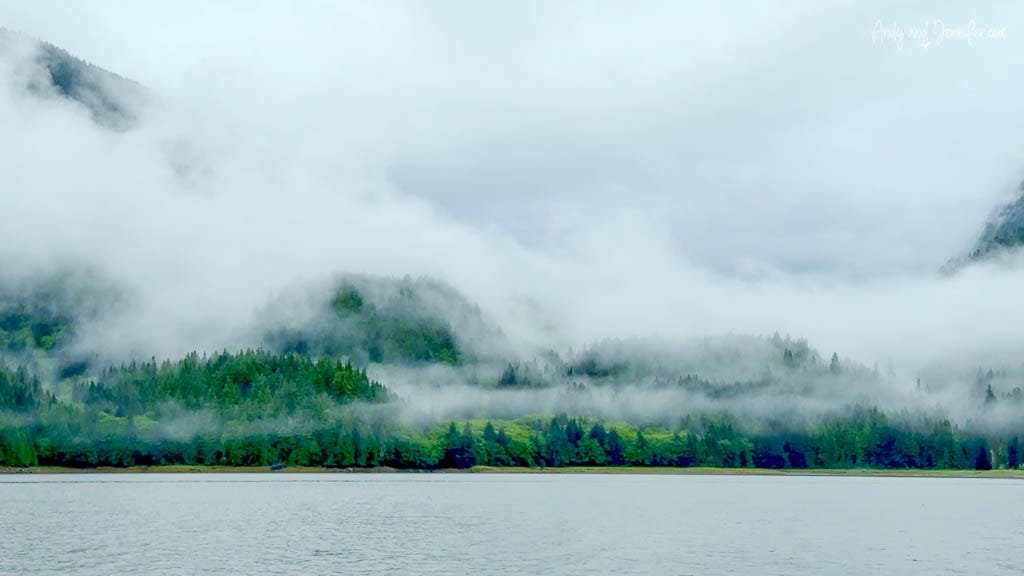
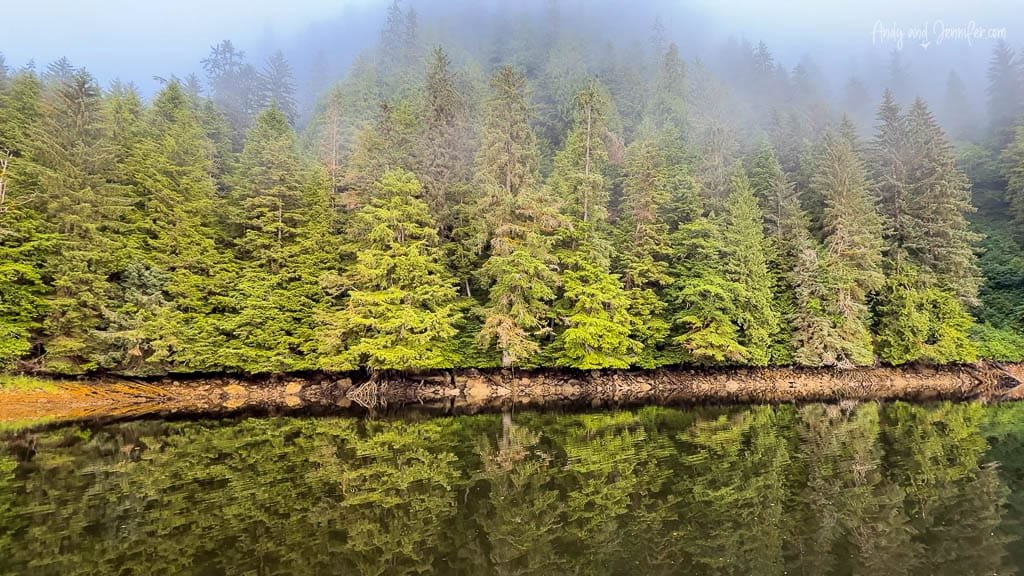
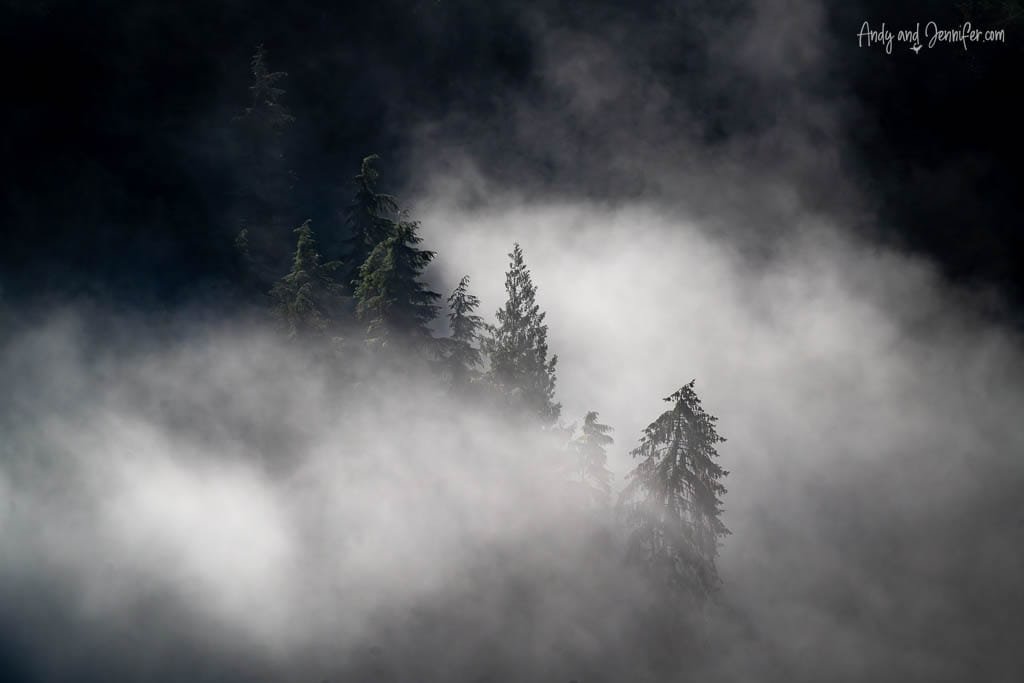
Wildlife Sightings in Mid-July
The bear viewing was, in a word, outstanding. The inlet is home to more than 60 grizzly bears, and the guides knew most of them by sight. We still managed a few unknown individuals. Early July is peak season: the salmon have not arrived yet, so bears forage along the shoreline, turning rocks and grazing on sedge grass.
Over four nights (eight boat trips), we had 34 bear encounters involving 14 different individuals. Watching them up close in such a wild setting was unforgettable. The best shots often came from crouching low in the boat, which meant contorting around benches and seats in what I jokingly thought of as a “mobility sequence for photographers.”
It was not just about bears either. Having time allowed us to observe other behaviour and species:
Why Khutzeymateen Belongs on Your List
The Khutzeymateen has more than earned a place in our personal top 10 wildlife destinations. Between the remarkable bear encounters, the warmth of the lodge, and the dedication of the guides, it was one of those rare trips that exceeded every expectation.
After four nights it was sadly time to board the transfer boat back to Prince Rupert, ready for the long ferry ride south to Port Hardy and the next stage of our Canadian adventure.
We’re Andy and Jennifer—two former corporate executives who chose long ago to prioritise experiences over stuff while pursuing our passions for travel and photography. From the Arctic to Antarctica, and most places in between, we’ve captured the world through our lenses and love sharing those stories. Our careers gave us the means, but our purpose is inspiring others to explore and helping people create images they’re proud of.
